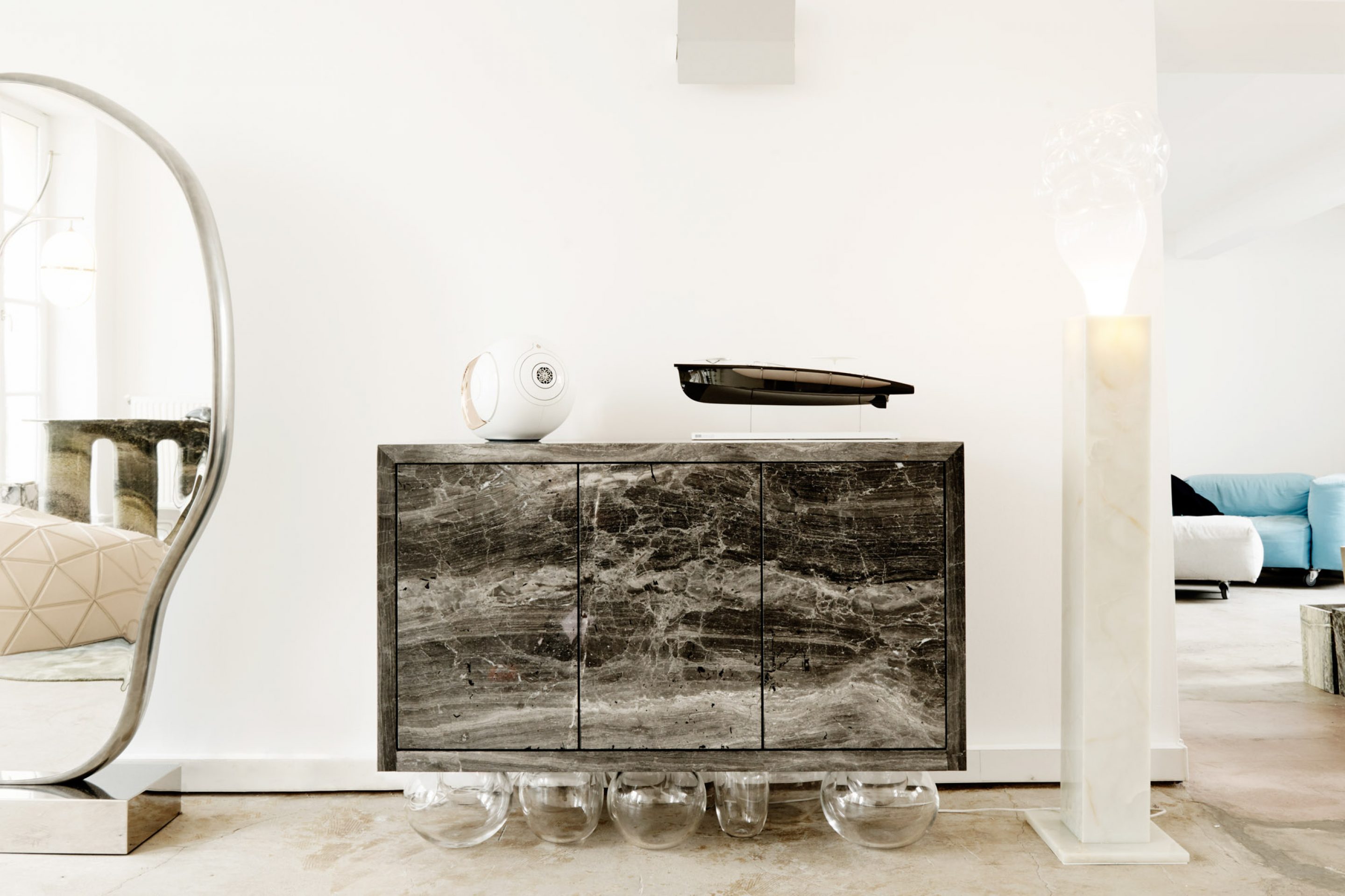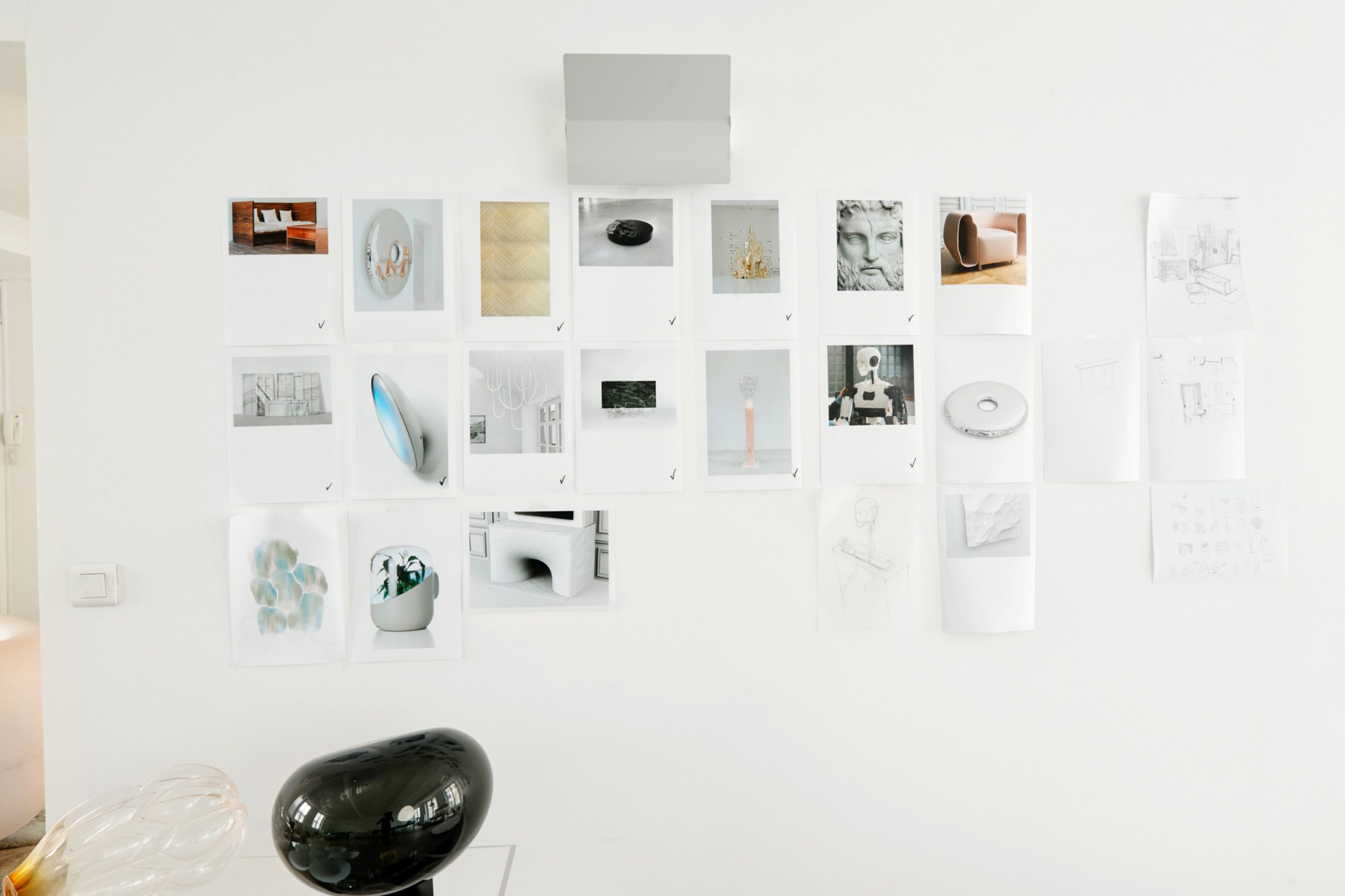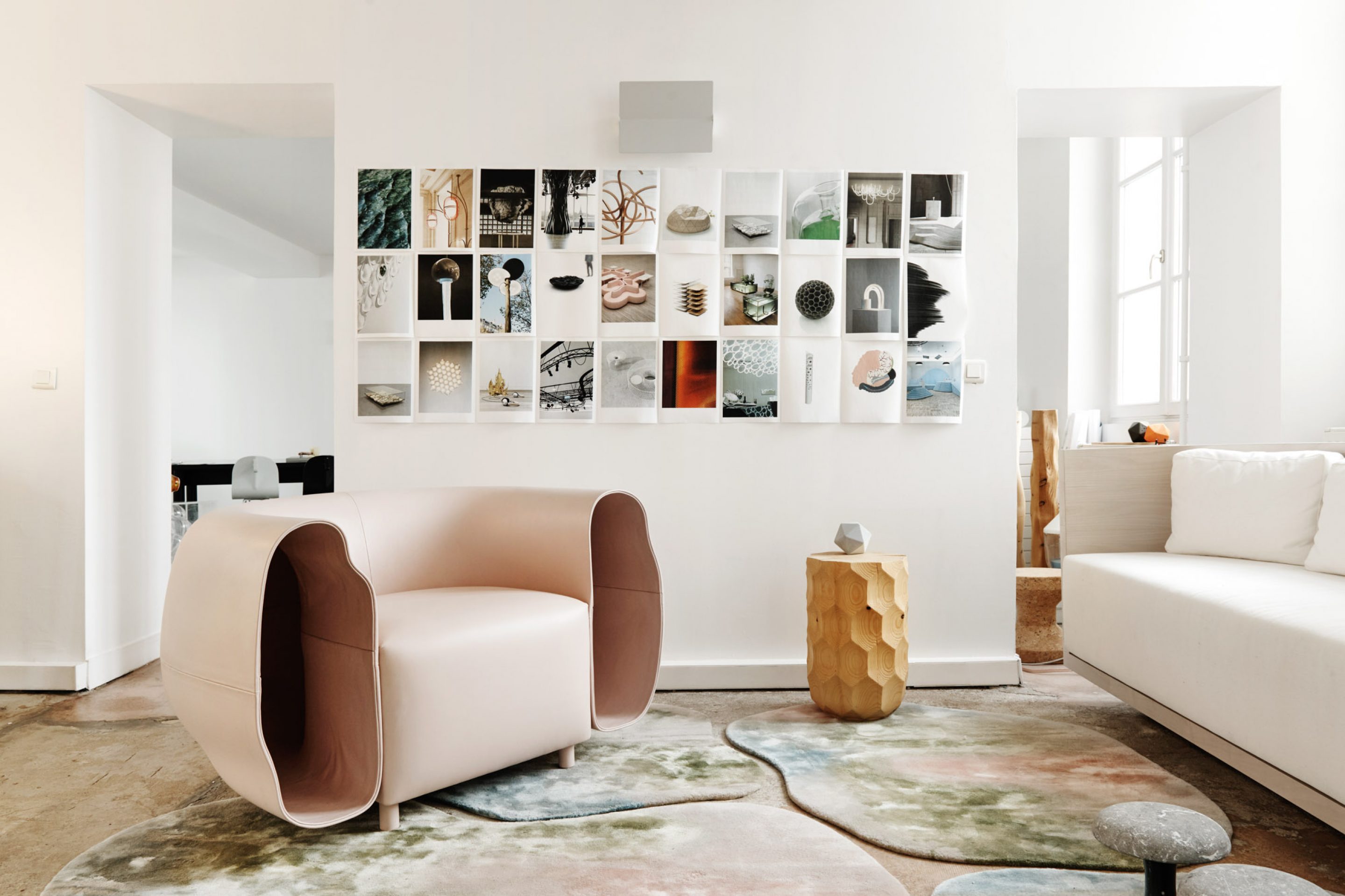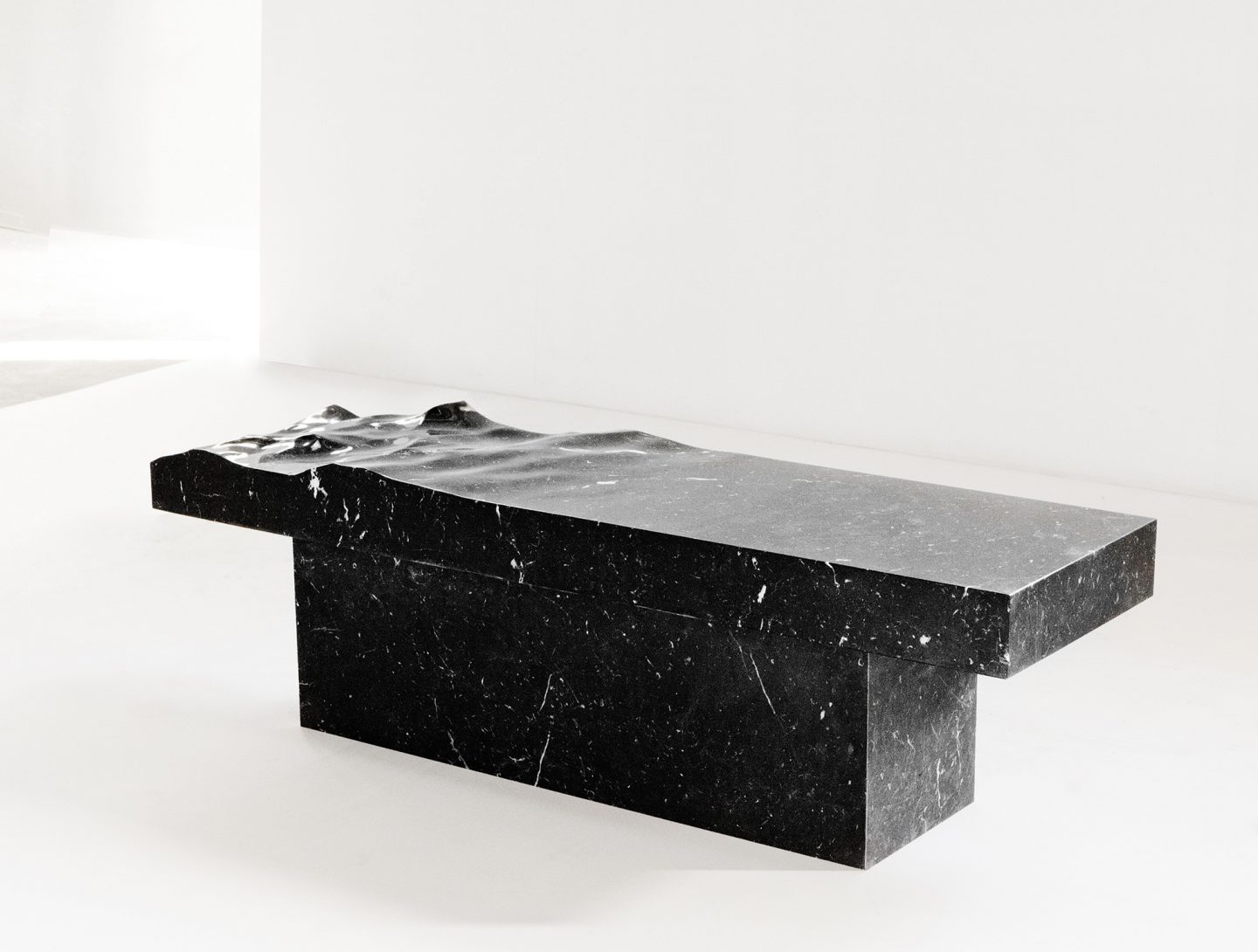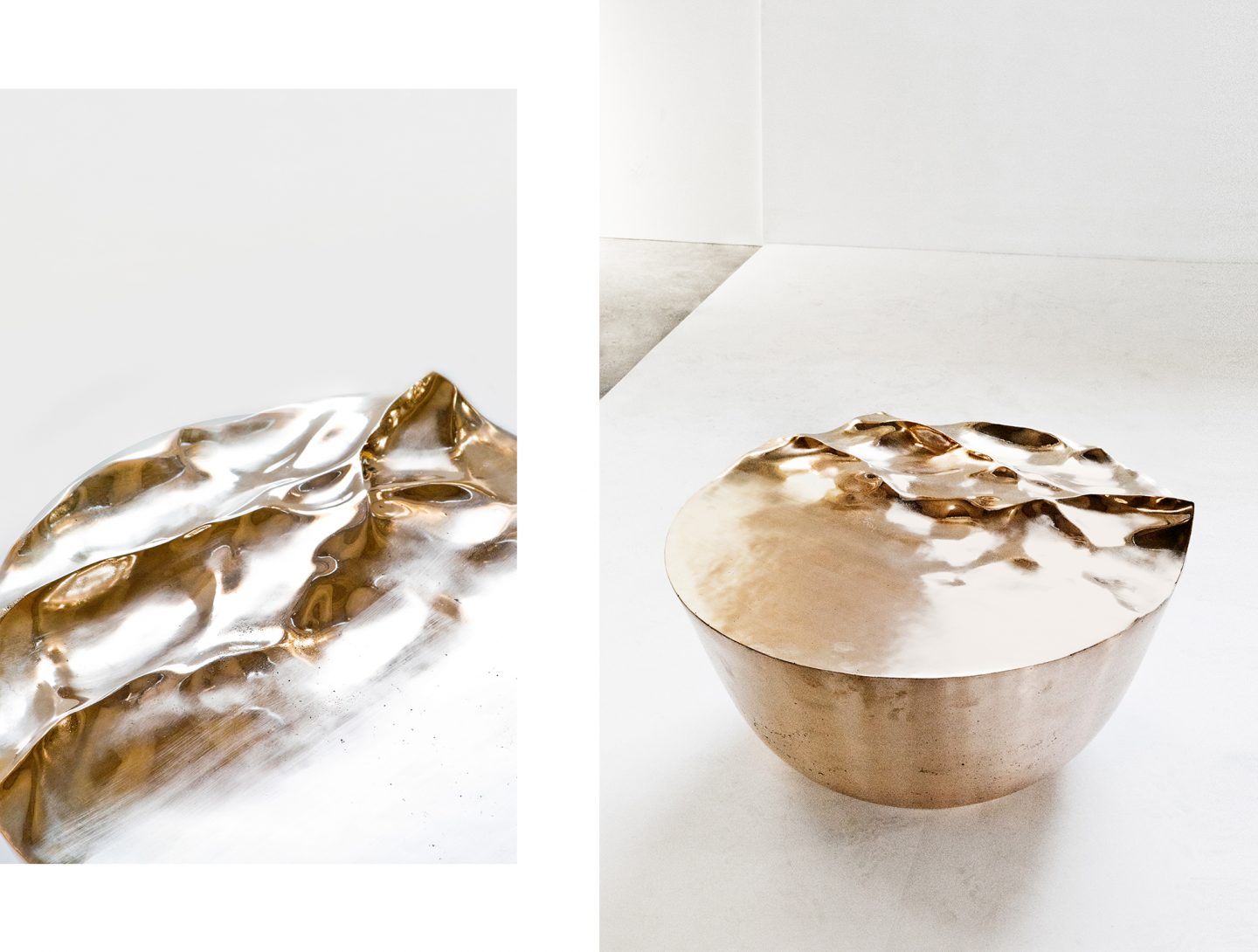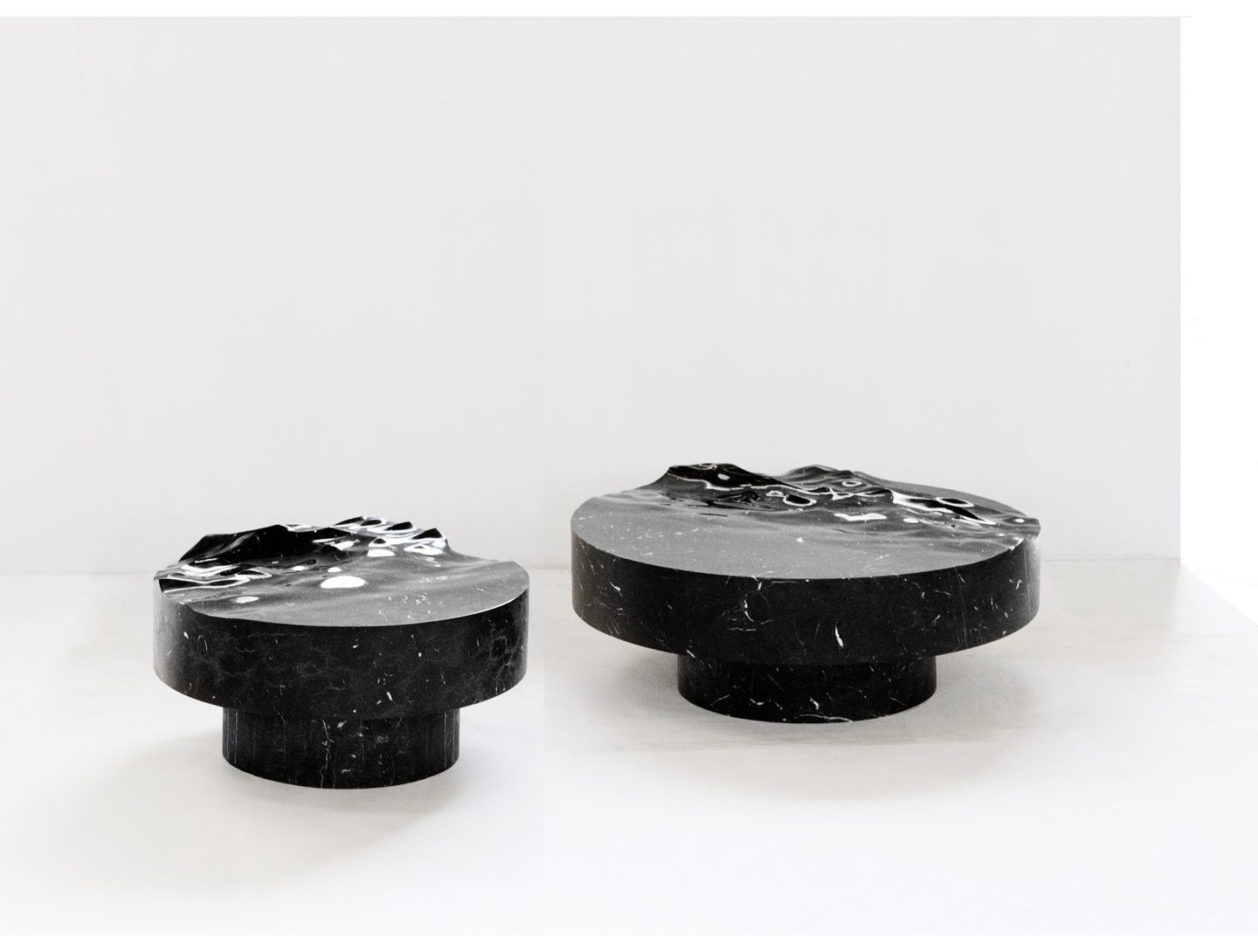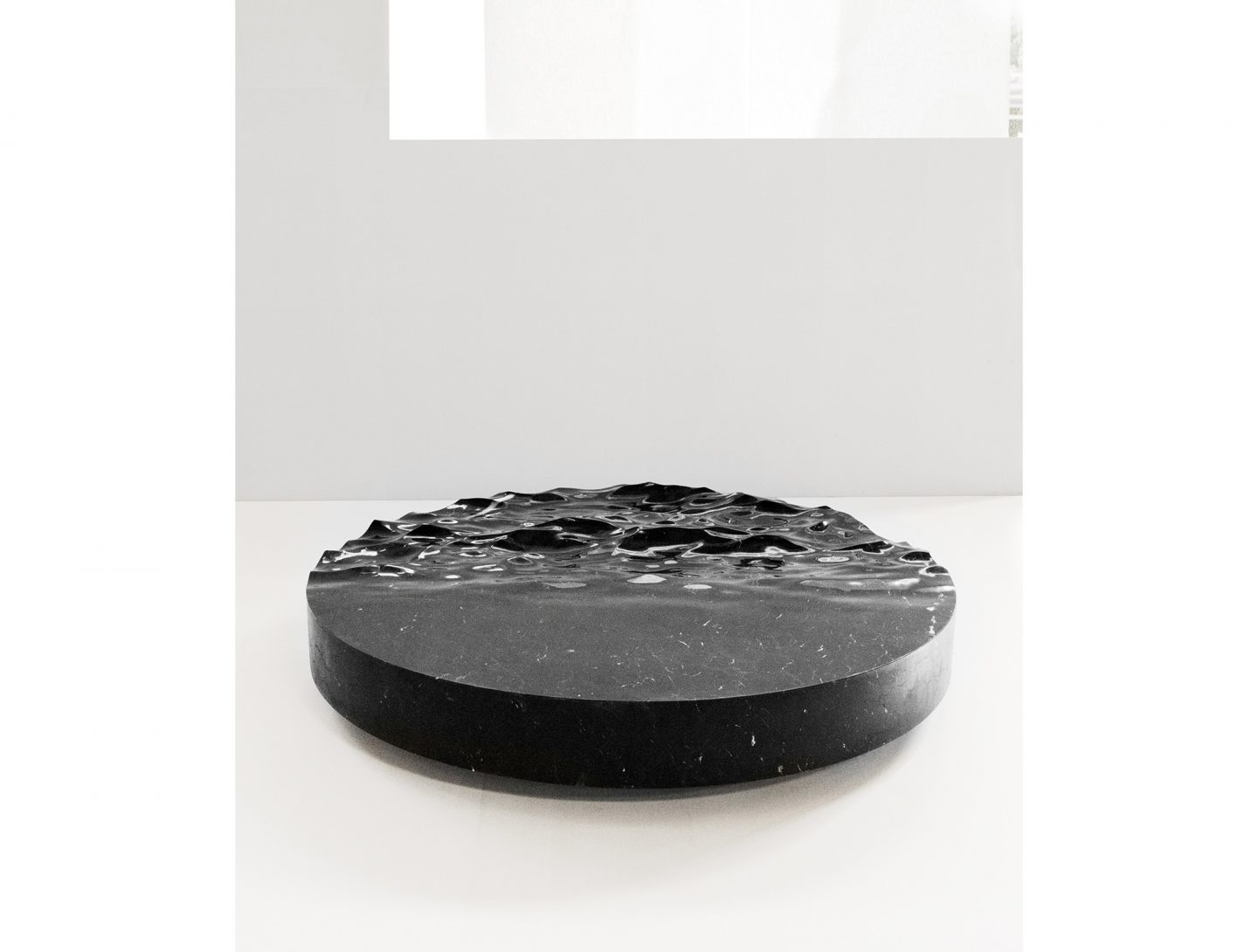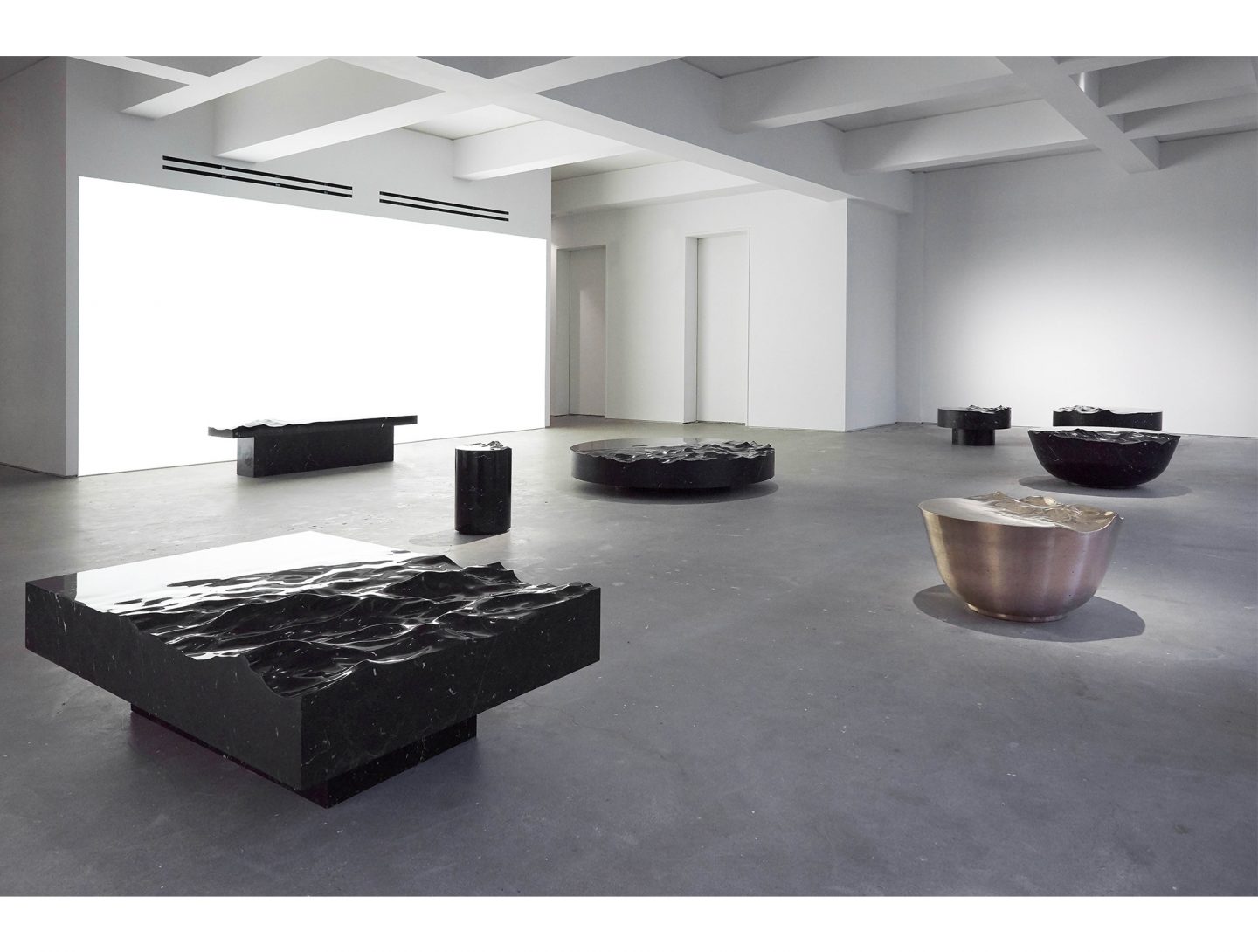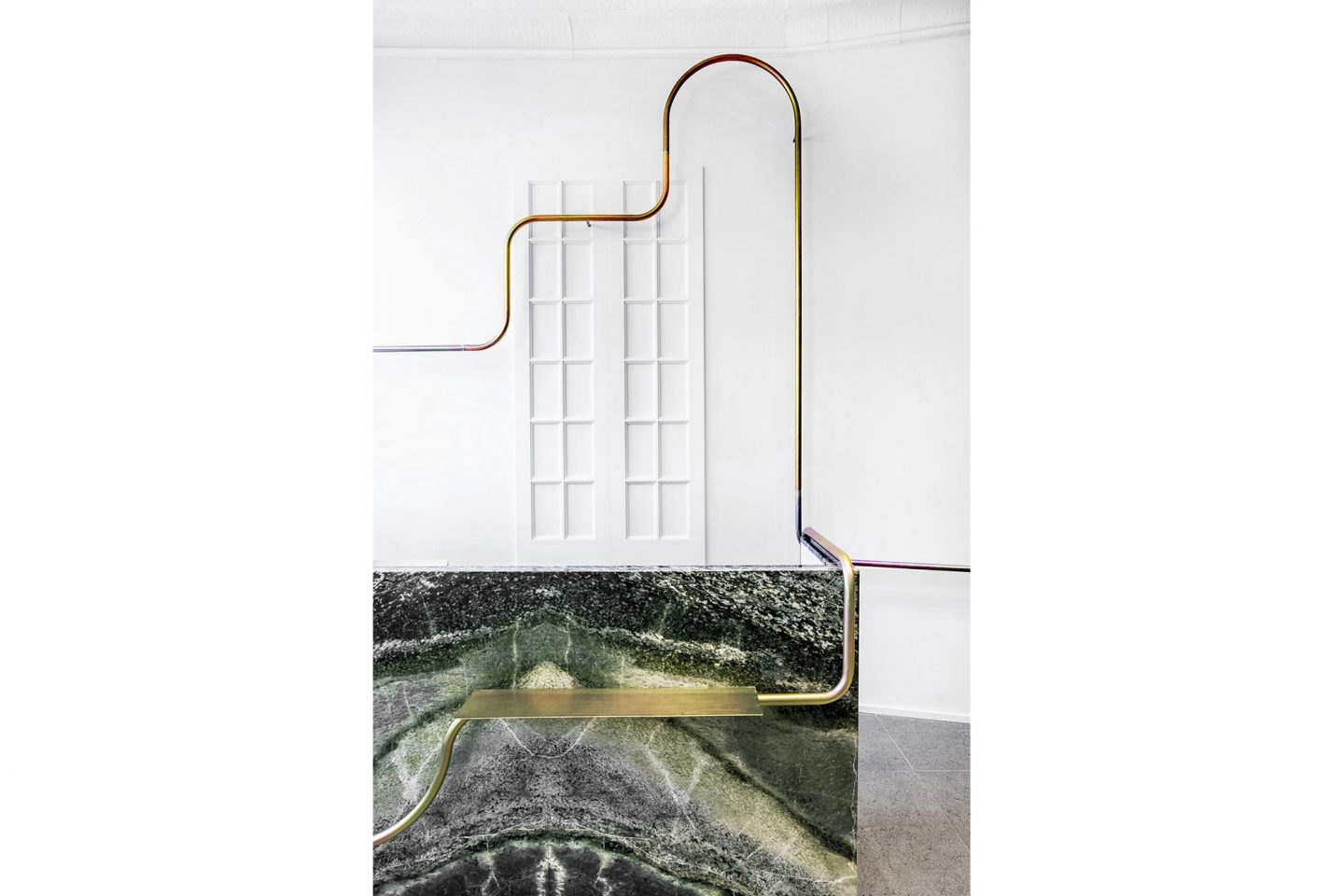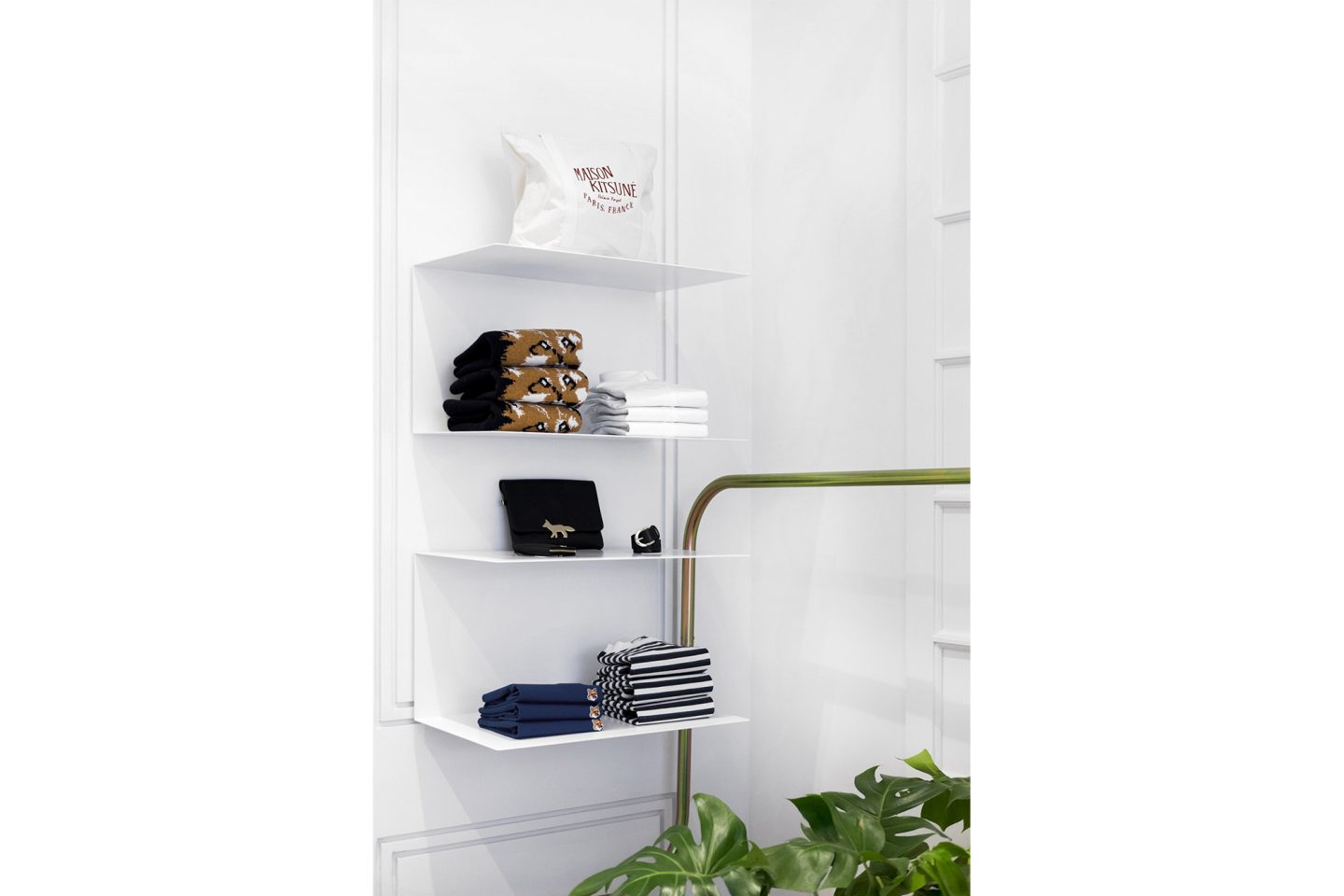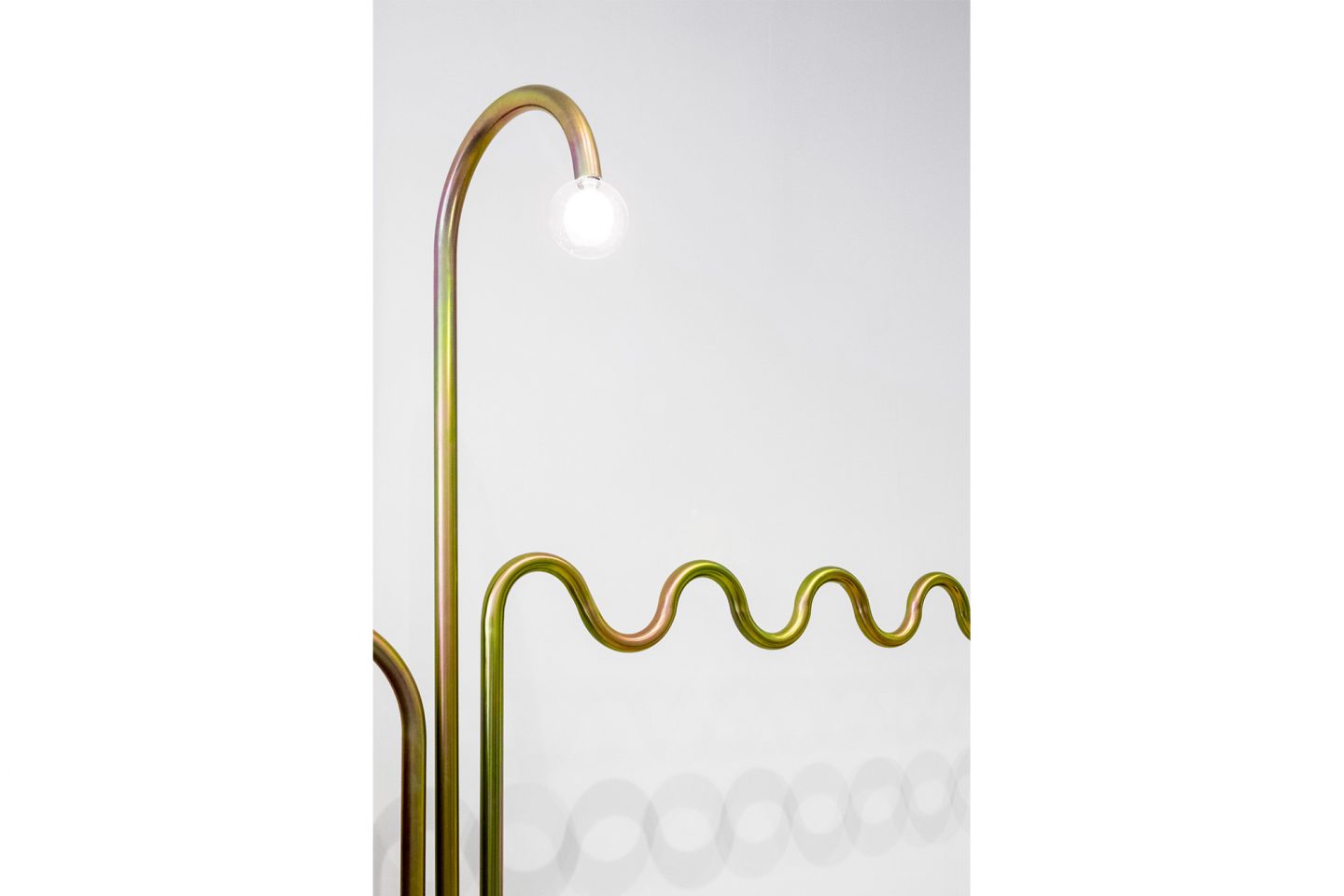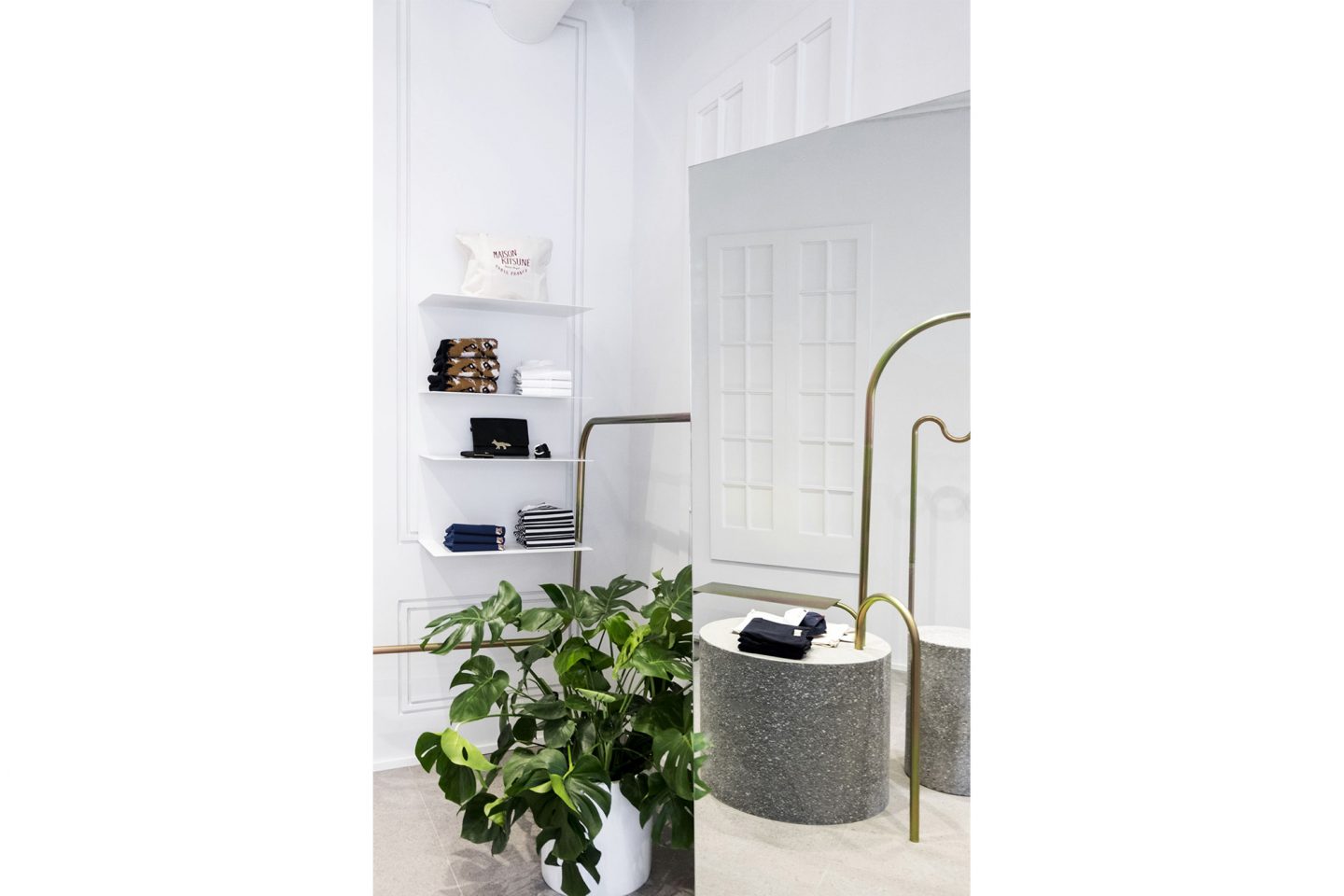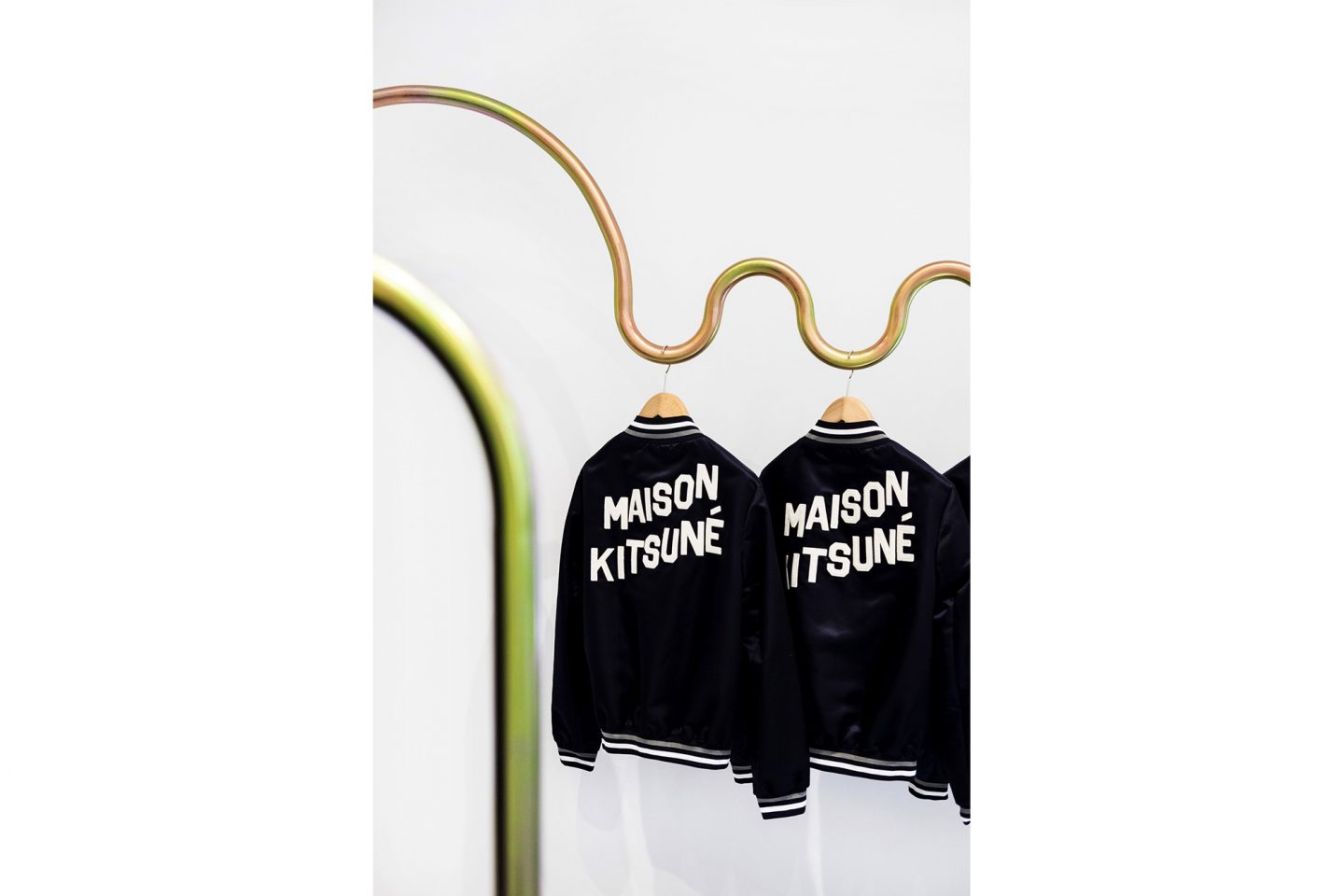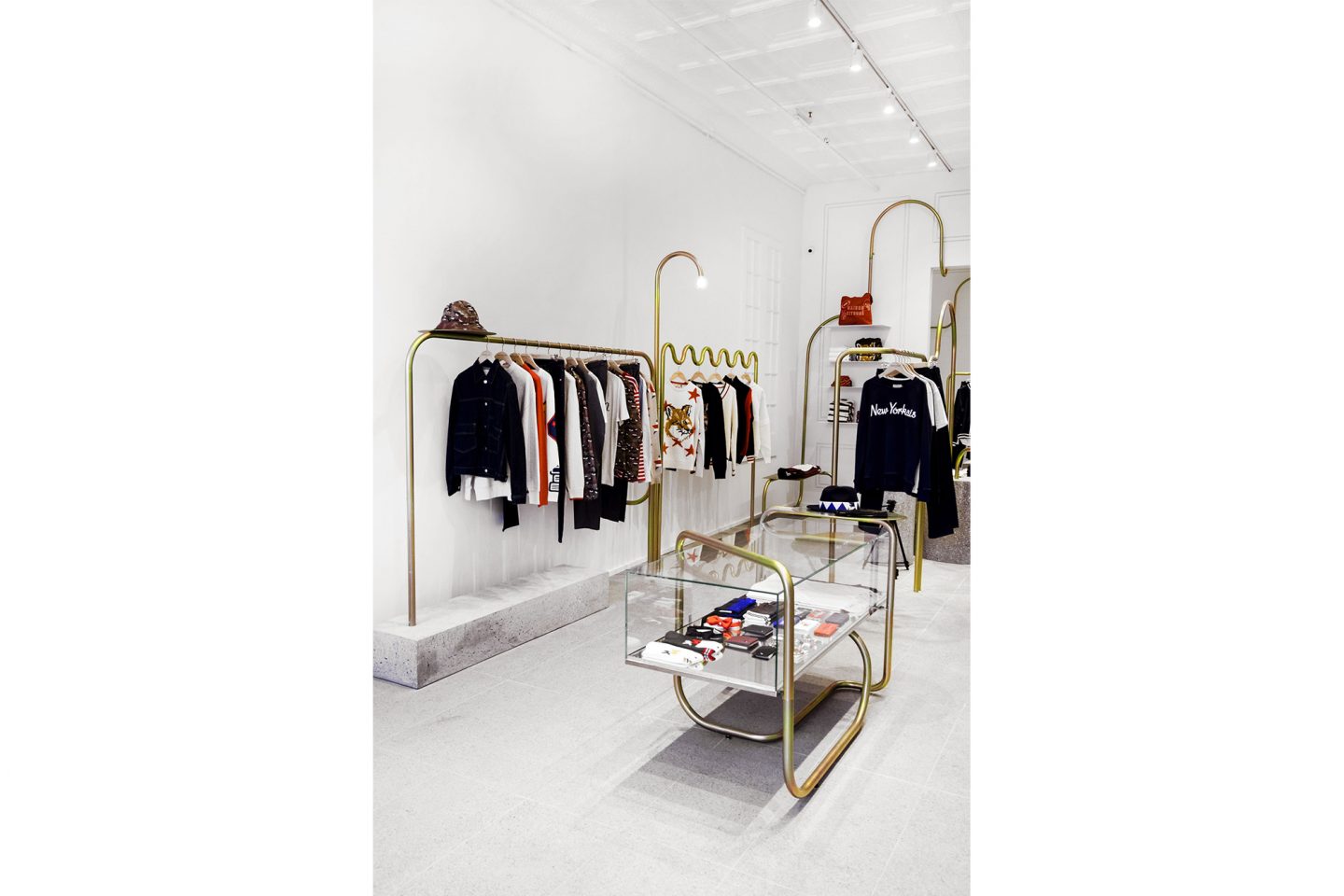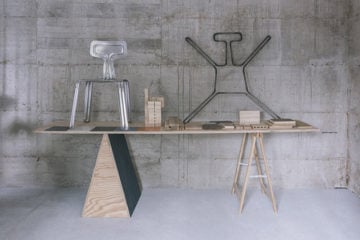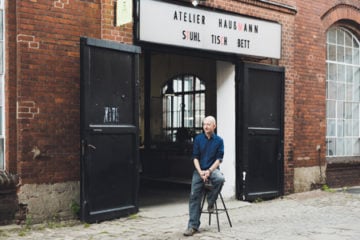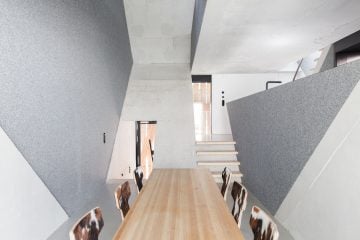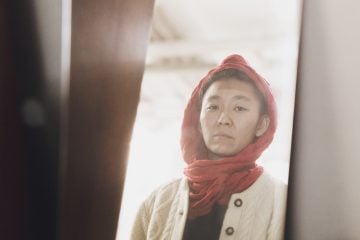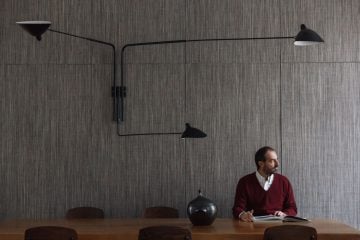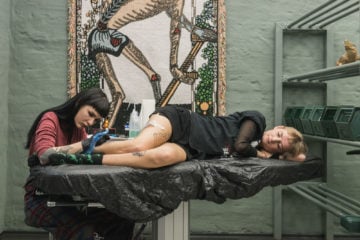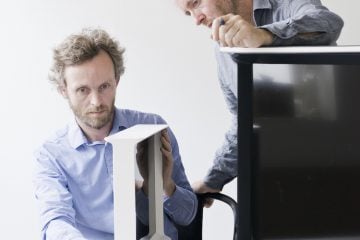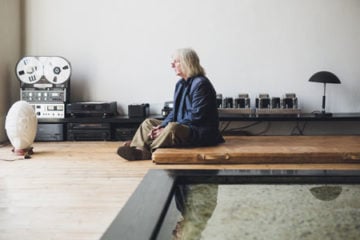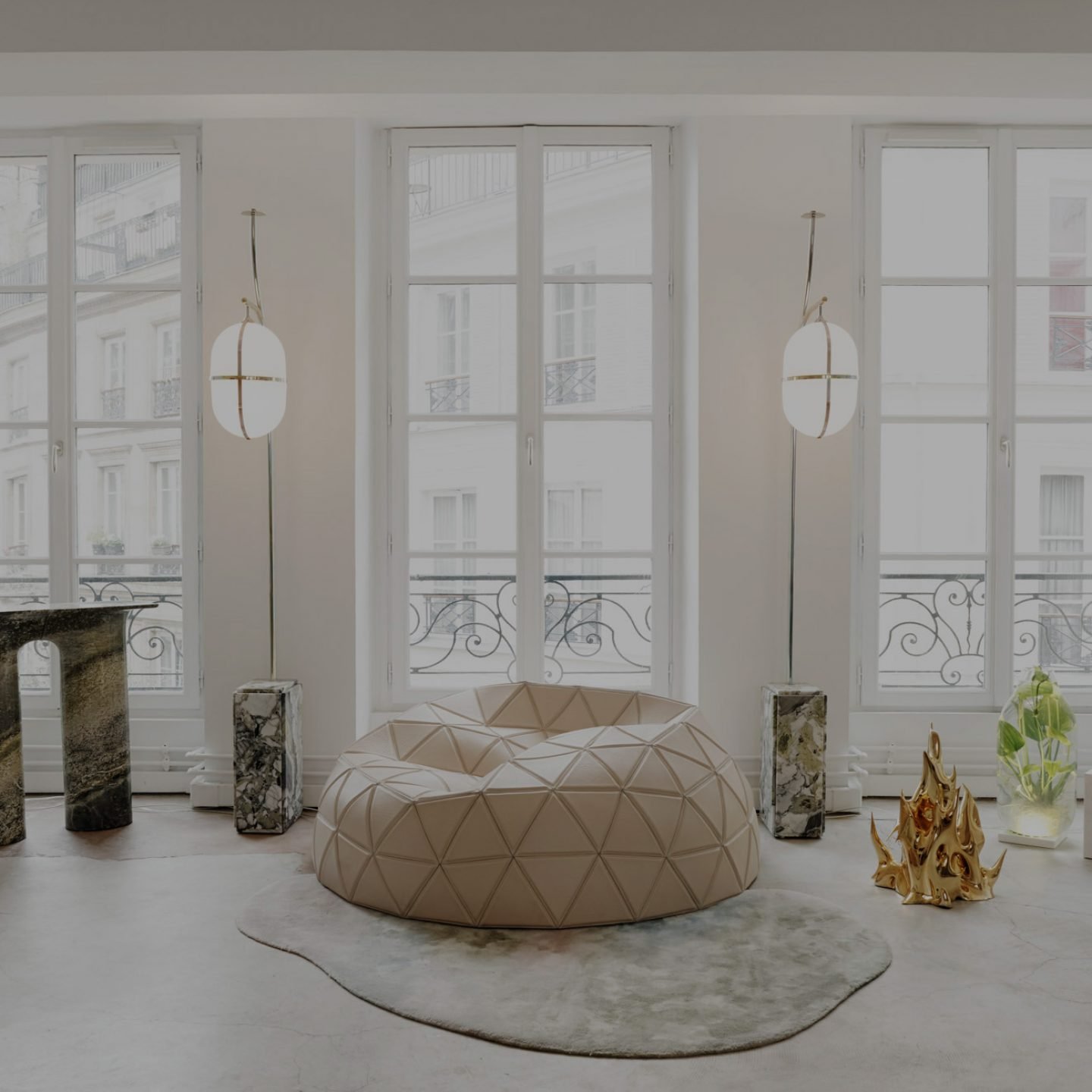
The Visionary Creativity Of Mathieu Lehanneur
- Name
- Mathieu Lehanneur
- Images
- Thomas Chéné
- Words
- Anna Dorothea Ker
The interdependence of design, art and technology is becoming ever more crucial when it comes to creating the kind of future we want to live in. Working at the cutting edge between all three disciplines is the formidable French designer, Mathieu Lehanneur, who — despite claiming he has always tried to be a specialist in nothing — has mastered his craft within each.
Yet it is when pushing the boundaries towards the not-quite-yet-possible that Lehanneur thrives. Bold, visionary and immensely aesthetically gratifying, his vast portfolio of work ranges from urban e-Bikes for Voltitude to the interior of Maison Kitsuné’s freshly-opened New York flagship and sculptural art pieces which call into the question the materiality of marble. Whether he’s lending his pragmatic imagination to Nike, Sony or Issey Miyake, each project carries his trademark touch of considered, intelligent design — inspired in its refined simplicity. Intrigued to go behind the scenes with the multi-talent, we visited him in his calm, light-filled Parisian studio. There, we got Lehanneur’s take on materiality, the philosophy underpinning his own studio space, and how he chooses with whom to work next.
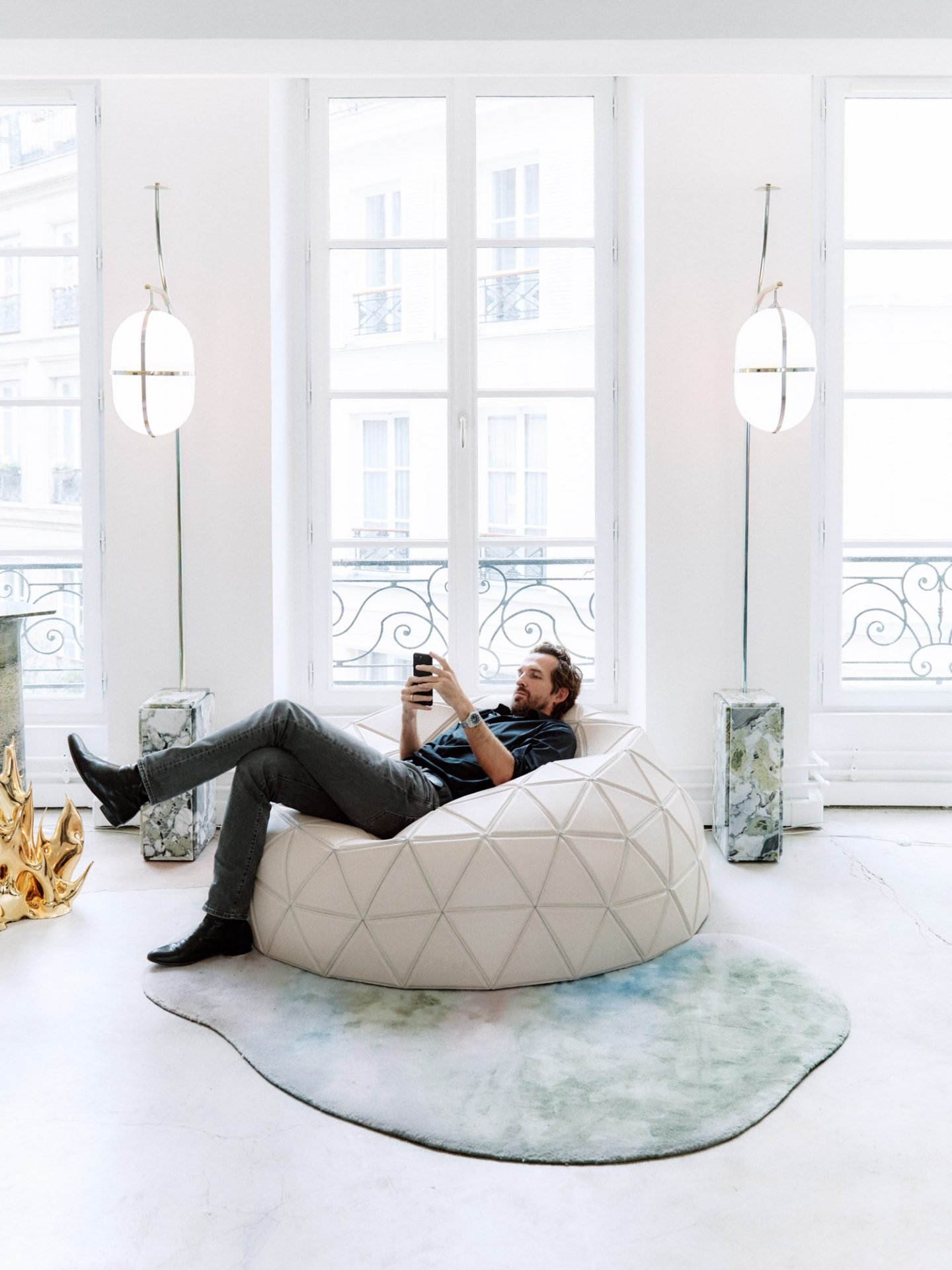
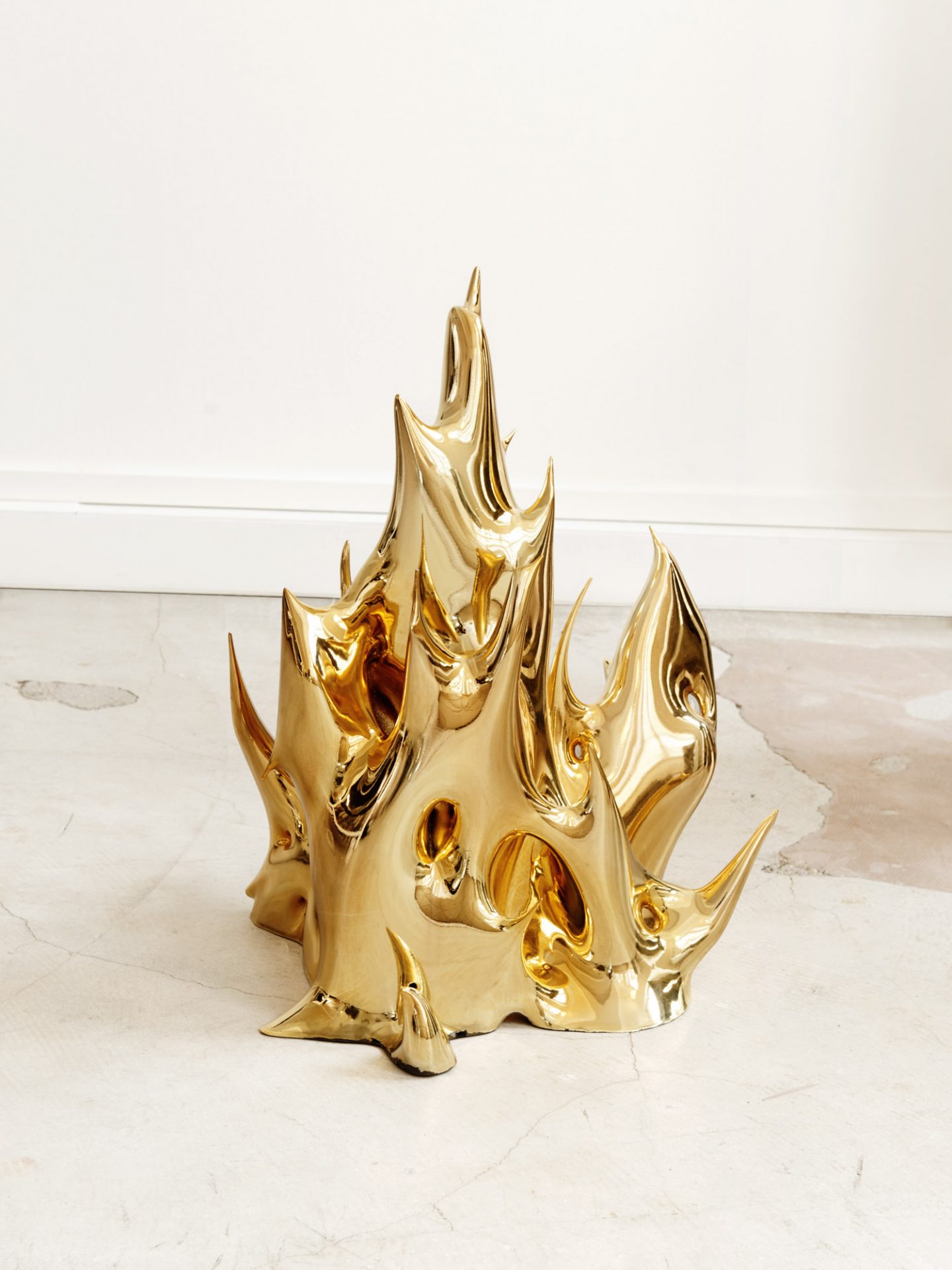
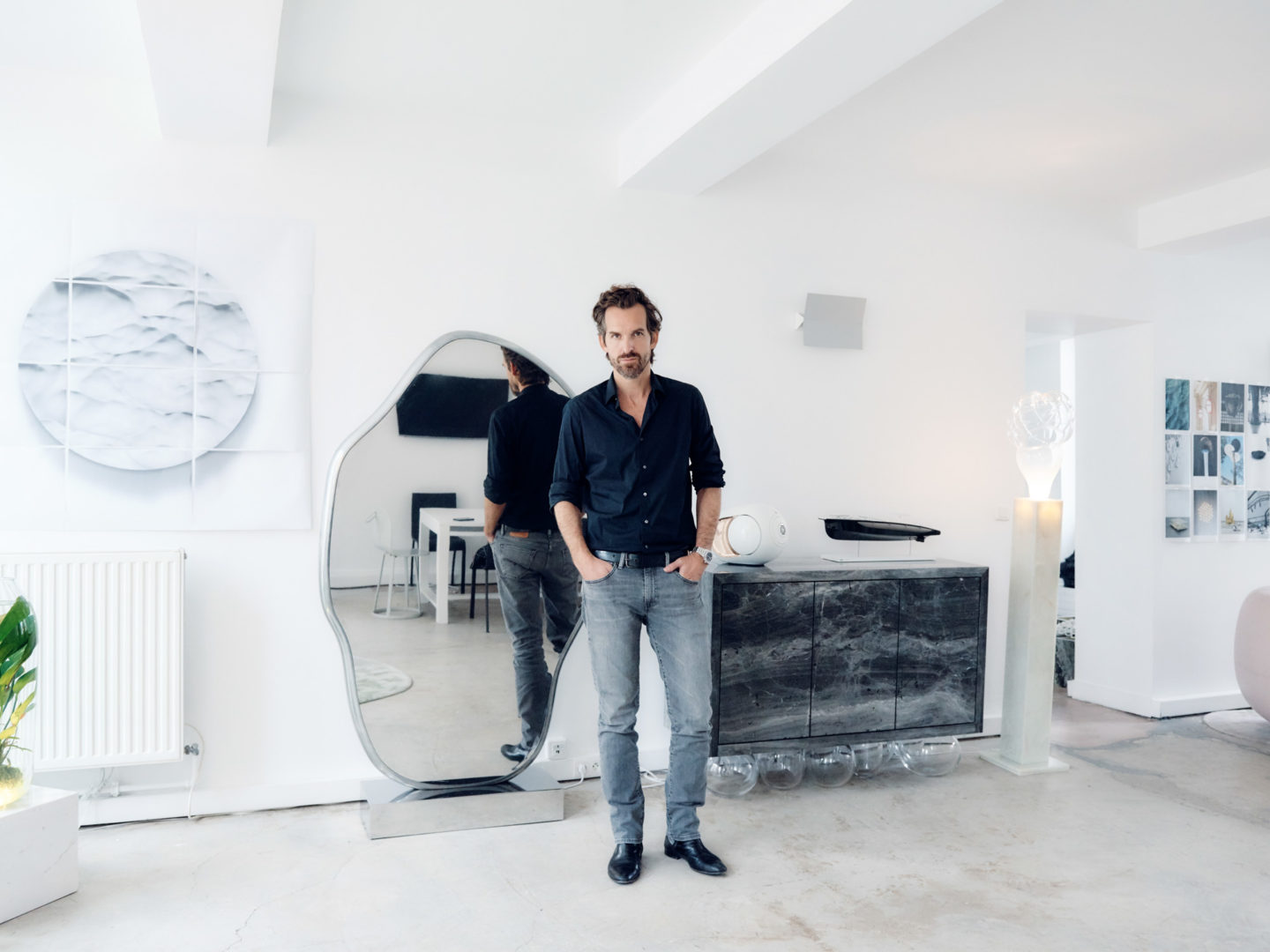
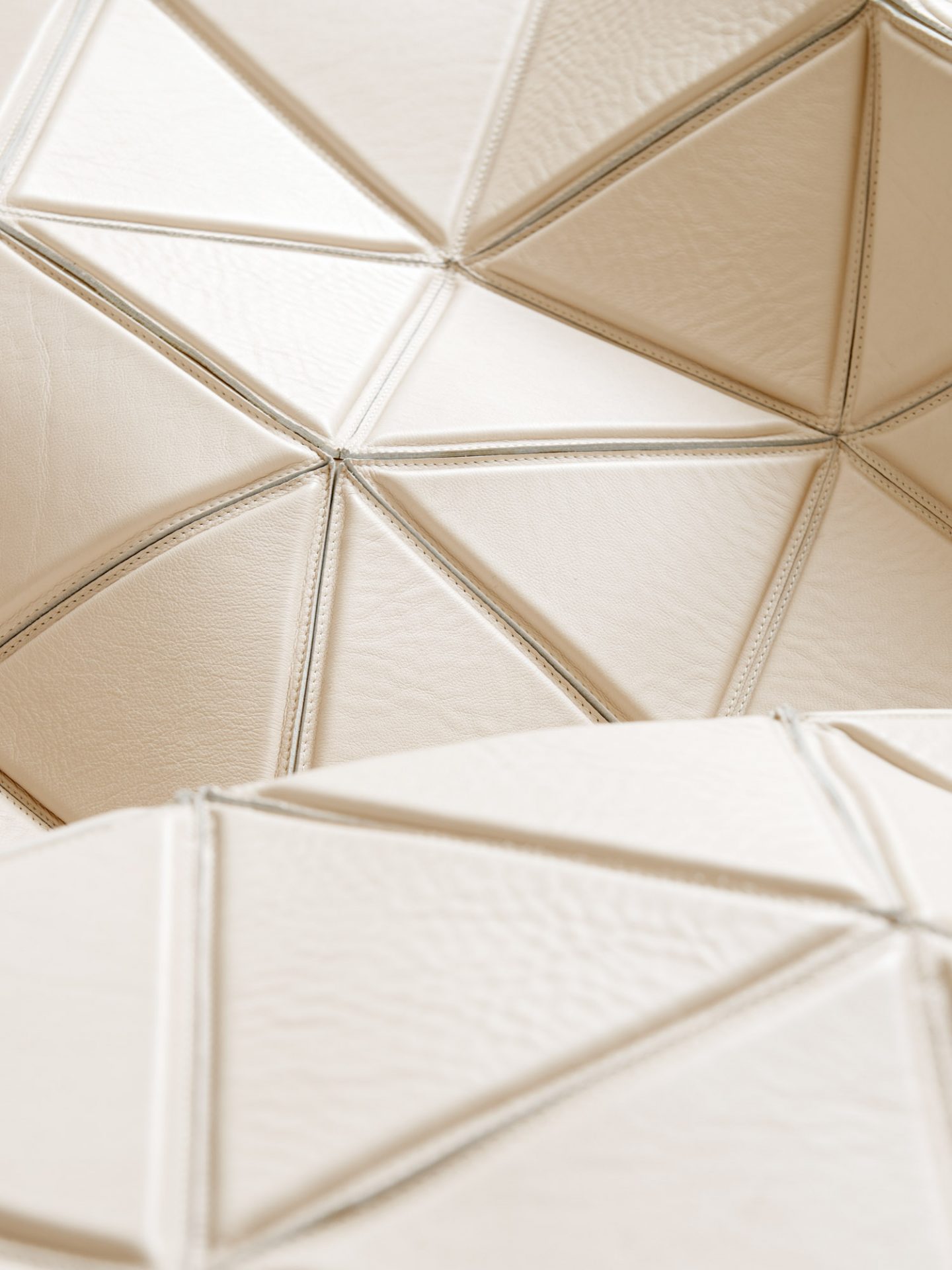
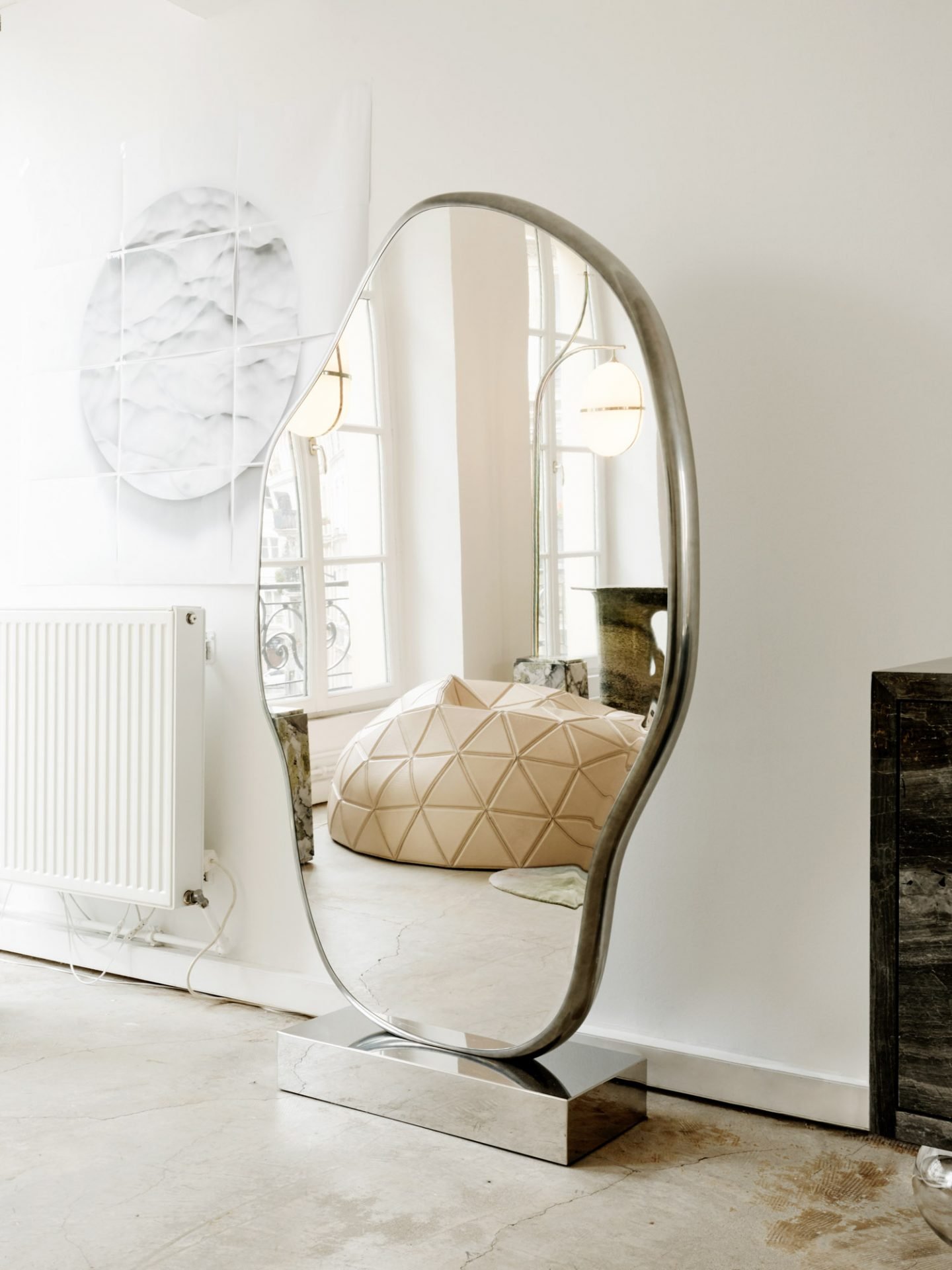
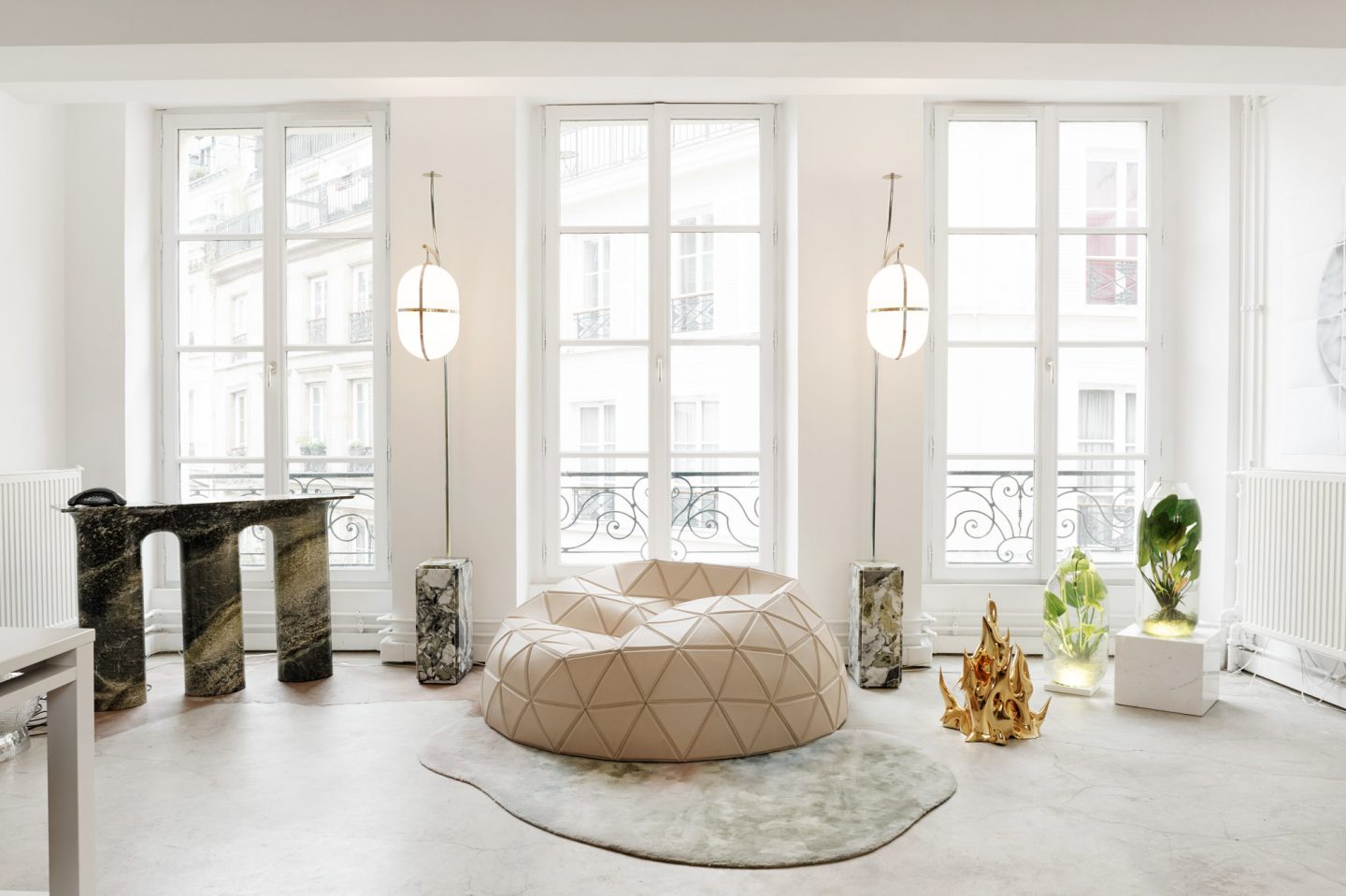
Your design practice draws upon and pushes the boundaries between design, art and technology in your work. How did your practice come to straddle these disciplines, and how do you stay agile between all three of them?
I have always tried in my job to be a specialist in nothing. For me, becoming a specialist diminishes a field of vision and I want to keep mine wide open to the world. I focus only on who we are: human beings. We need design, art and technology in our lives, we do not create distinctions in our desires and needs. Technology is our contemporary tool, art meets our need for transcendence and immortality and design accompanies us at every stage of our existence. I do not create a border between these approaches, I use them according to what I seek to achieve.
Materiality and its idiosyncrasies are at the center of your practice. What is it about the tactile nature of your work that most intrigues you, and what are some of the materials you’re currently experimenting with?
If you observe a young child in his relationship to the world, you will find that he interacts with his environment with his eyes as well as with his hands. Technology tends today to move away from the touch and materiality of things. I like to find the primitive experience of a world that is discovered with hands. The children have kept this freedom and I often use mine to check if my objects make a person want to be touched, caught or entwined…
Your studio space reflects the essentialist nature of your work. What were your main priorities when it came to designing a space in which you can stay productive?
I thought of this space as for a composer in front of his score. He needs a blank partition, just printed with a few lines. I need in the same way a free, clear, organized space. The composer just needs notes to create melodic lines or symphonies. My notes to me are samples of materials, pieces of objects and models without values.
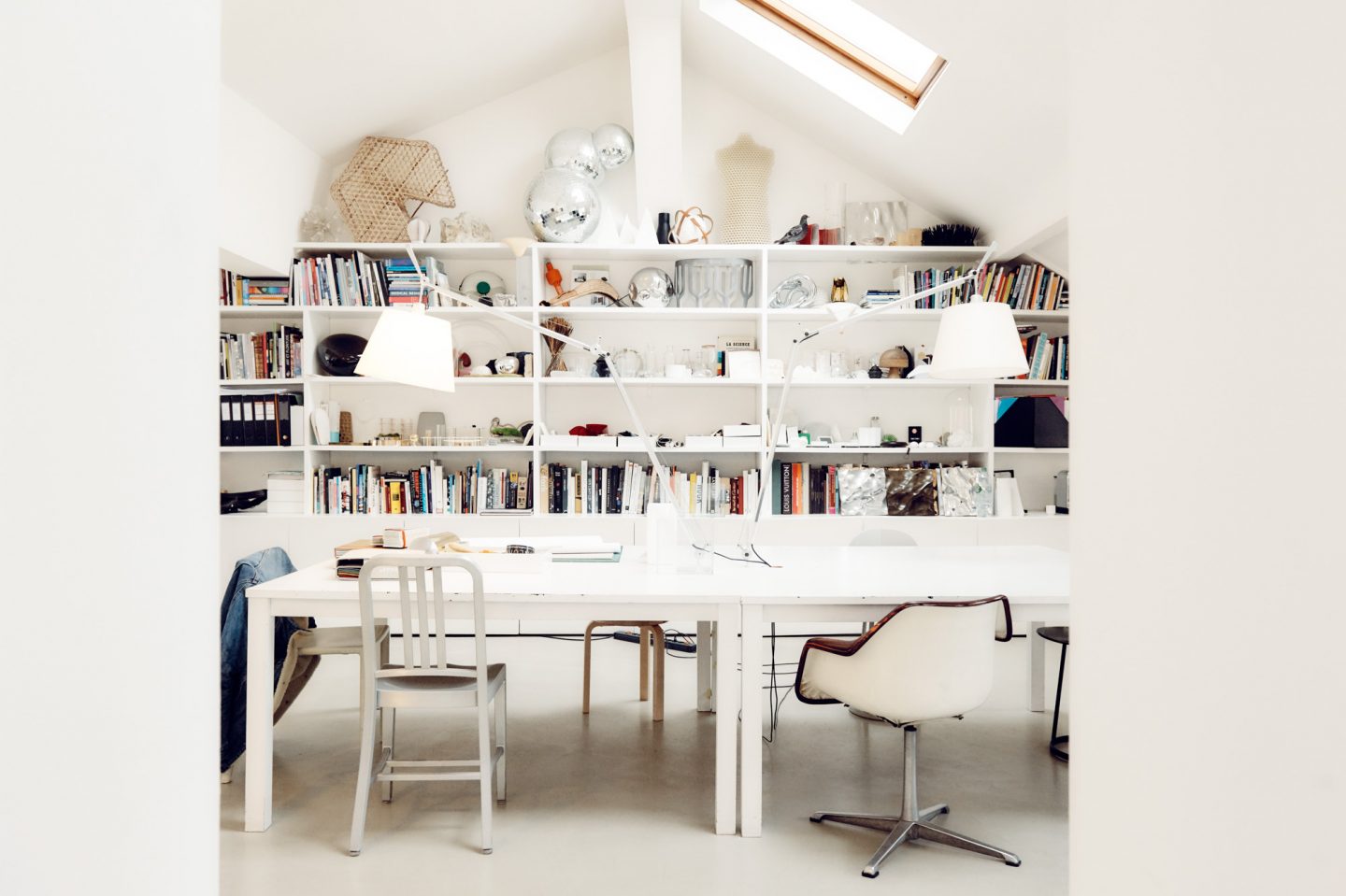
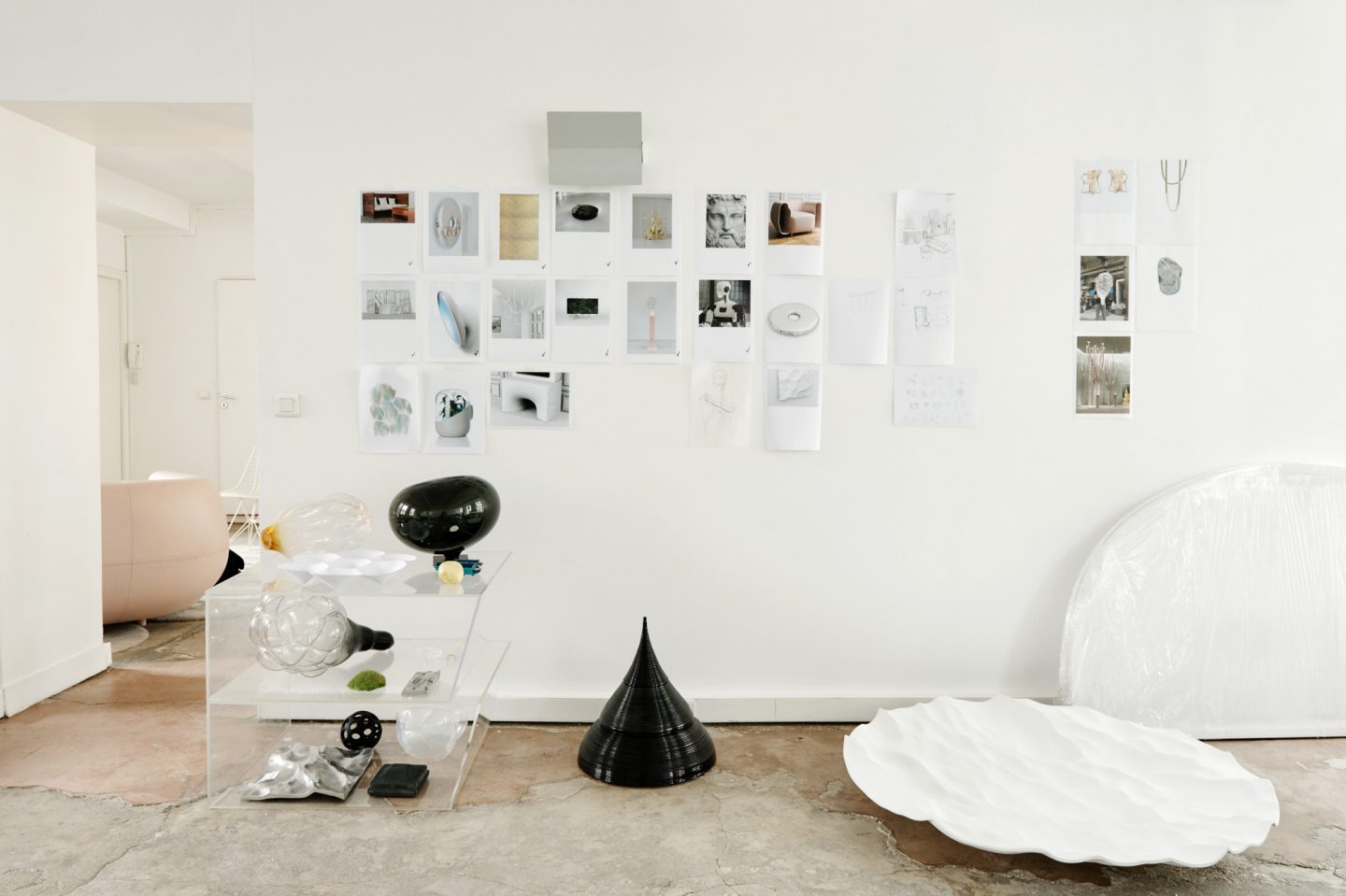
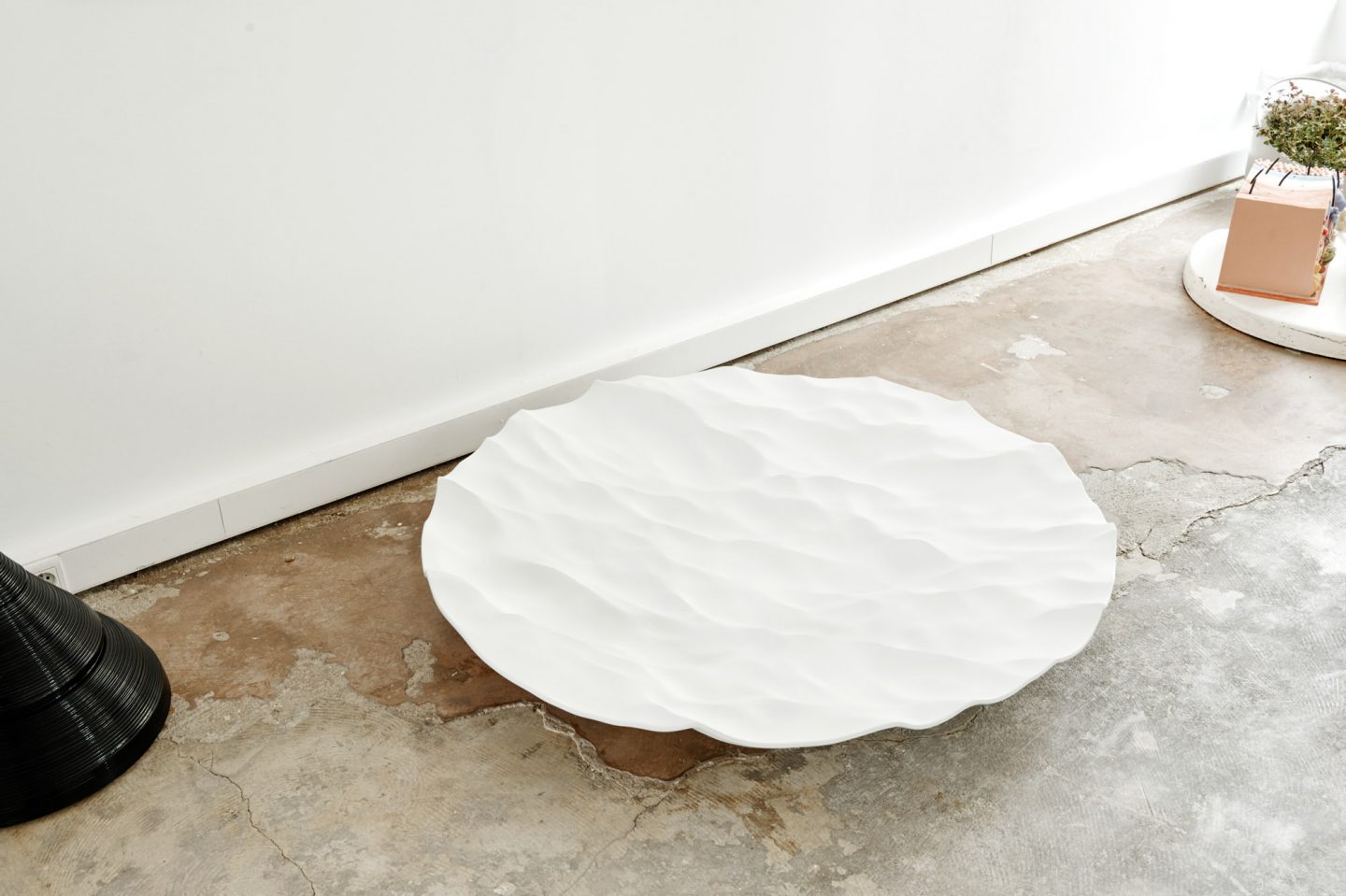
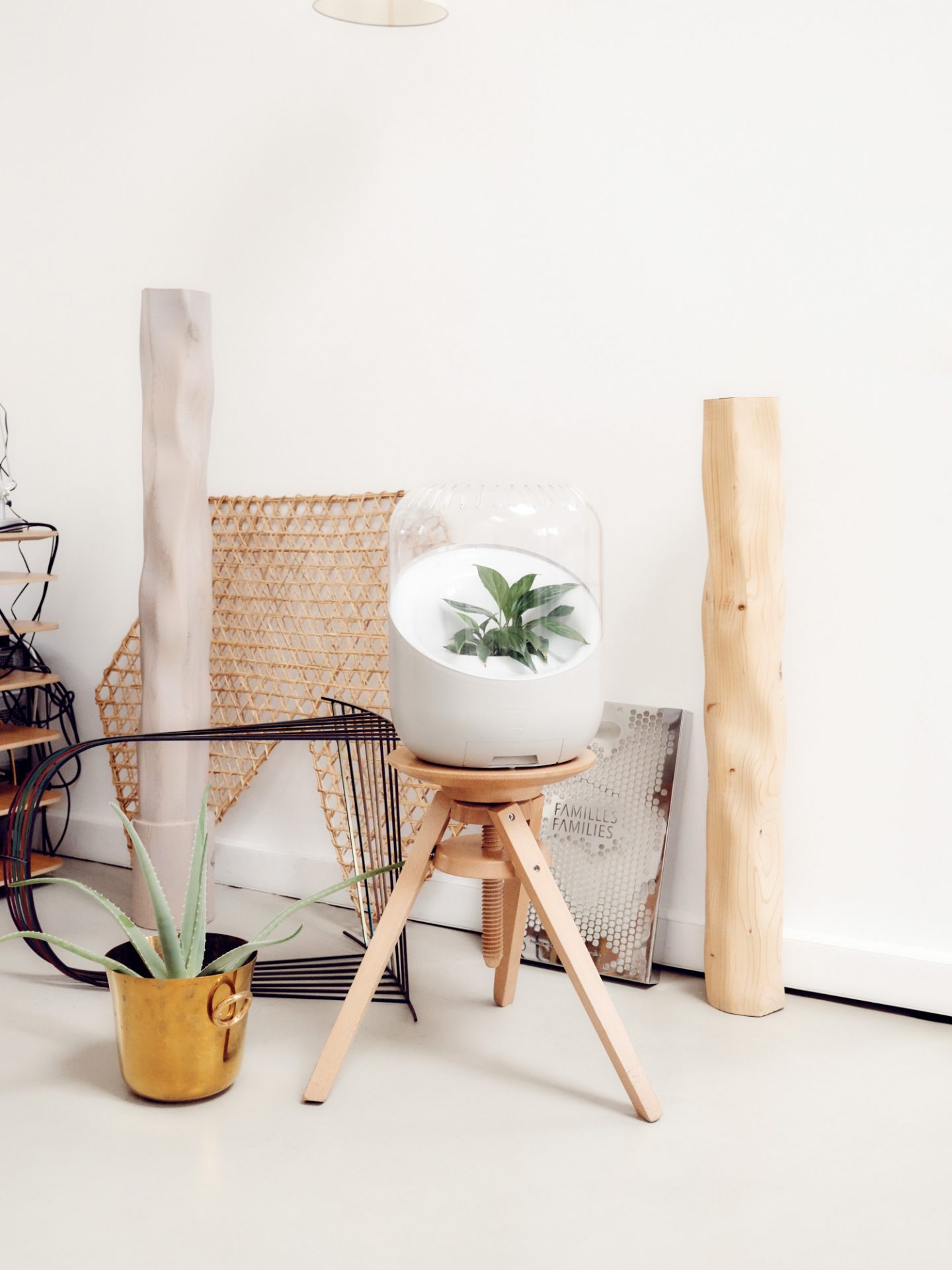
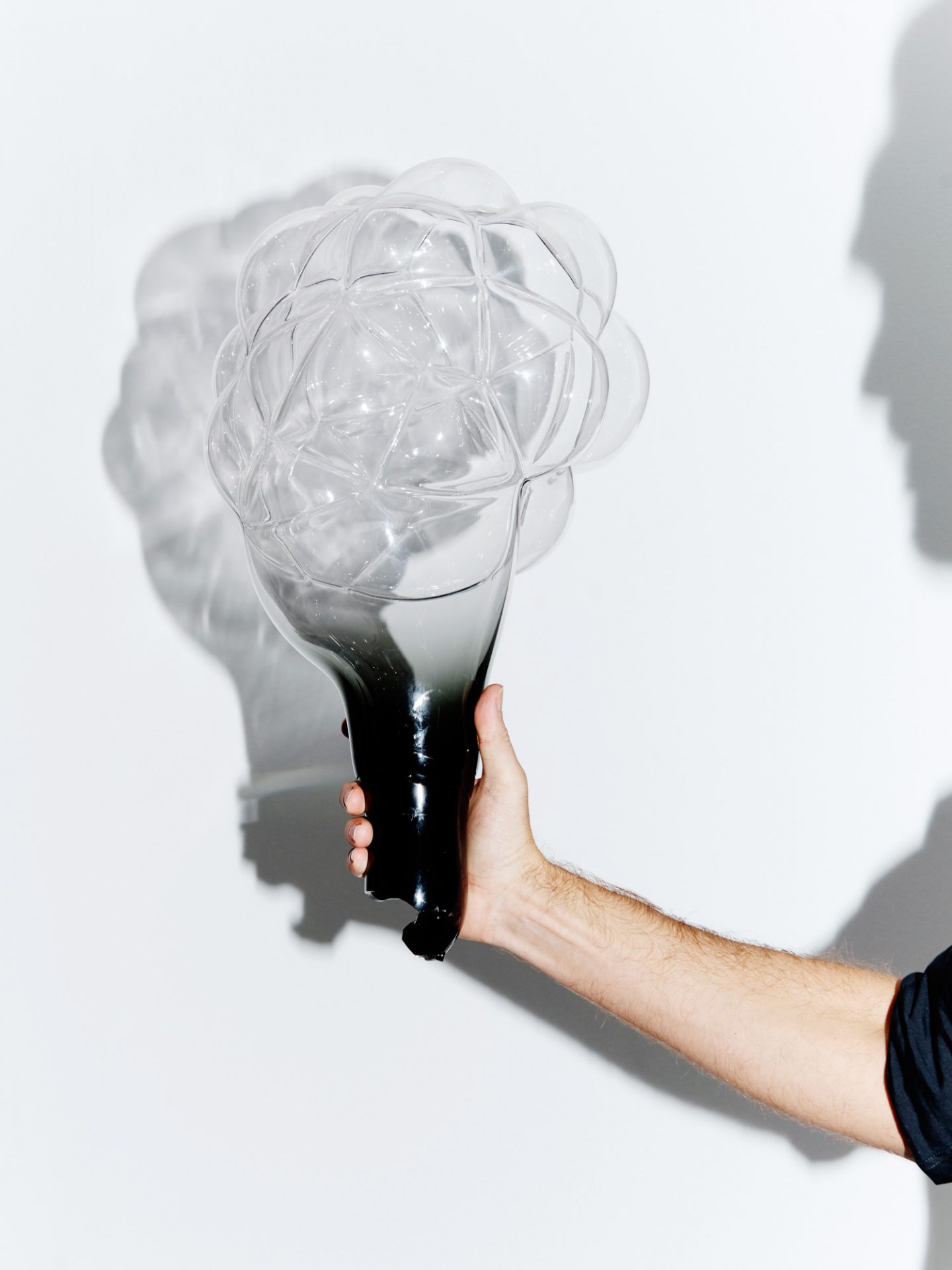
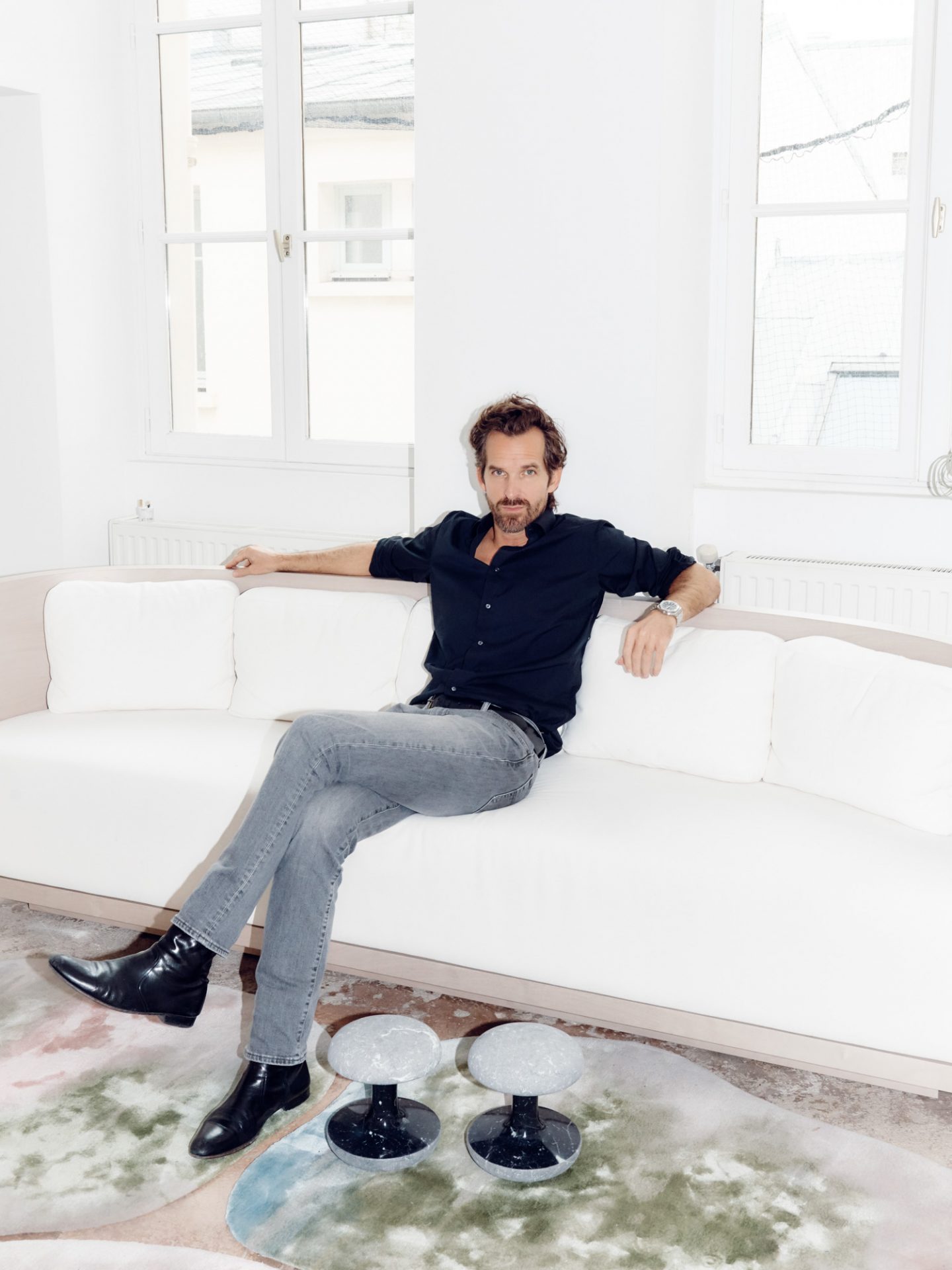
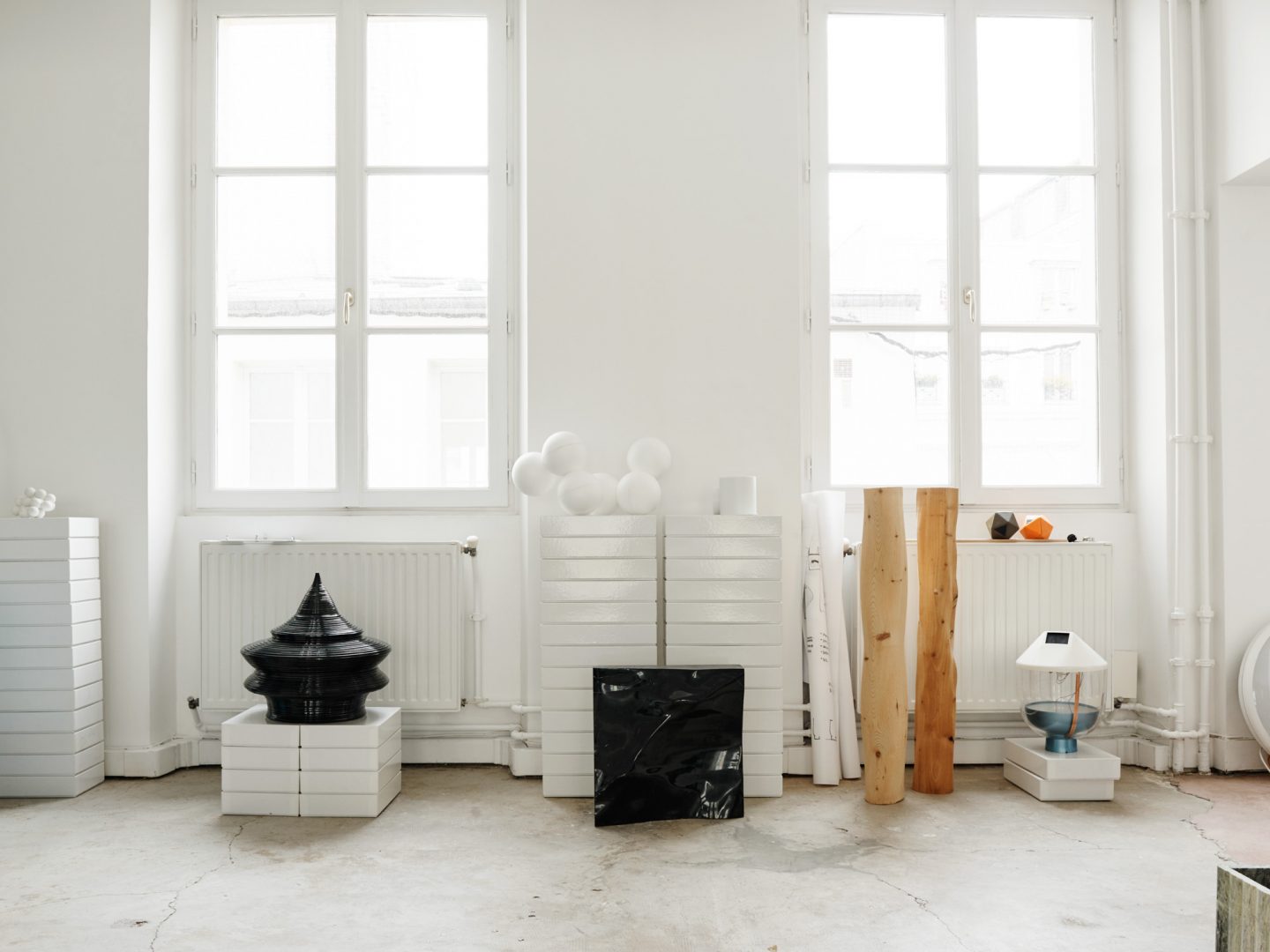
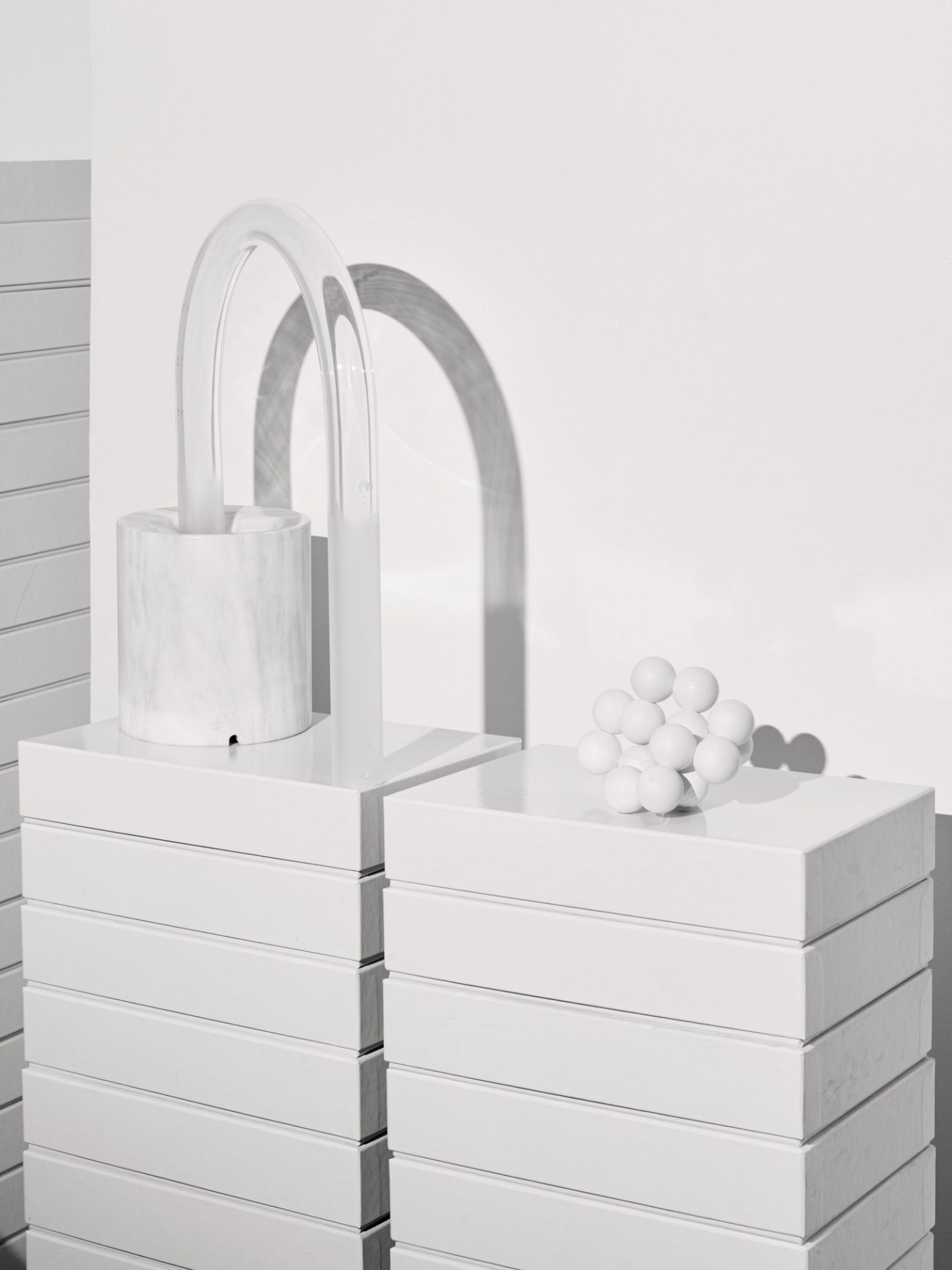
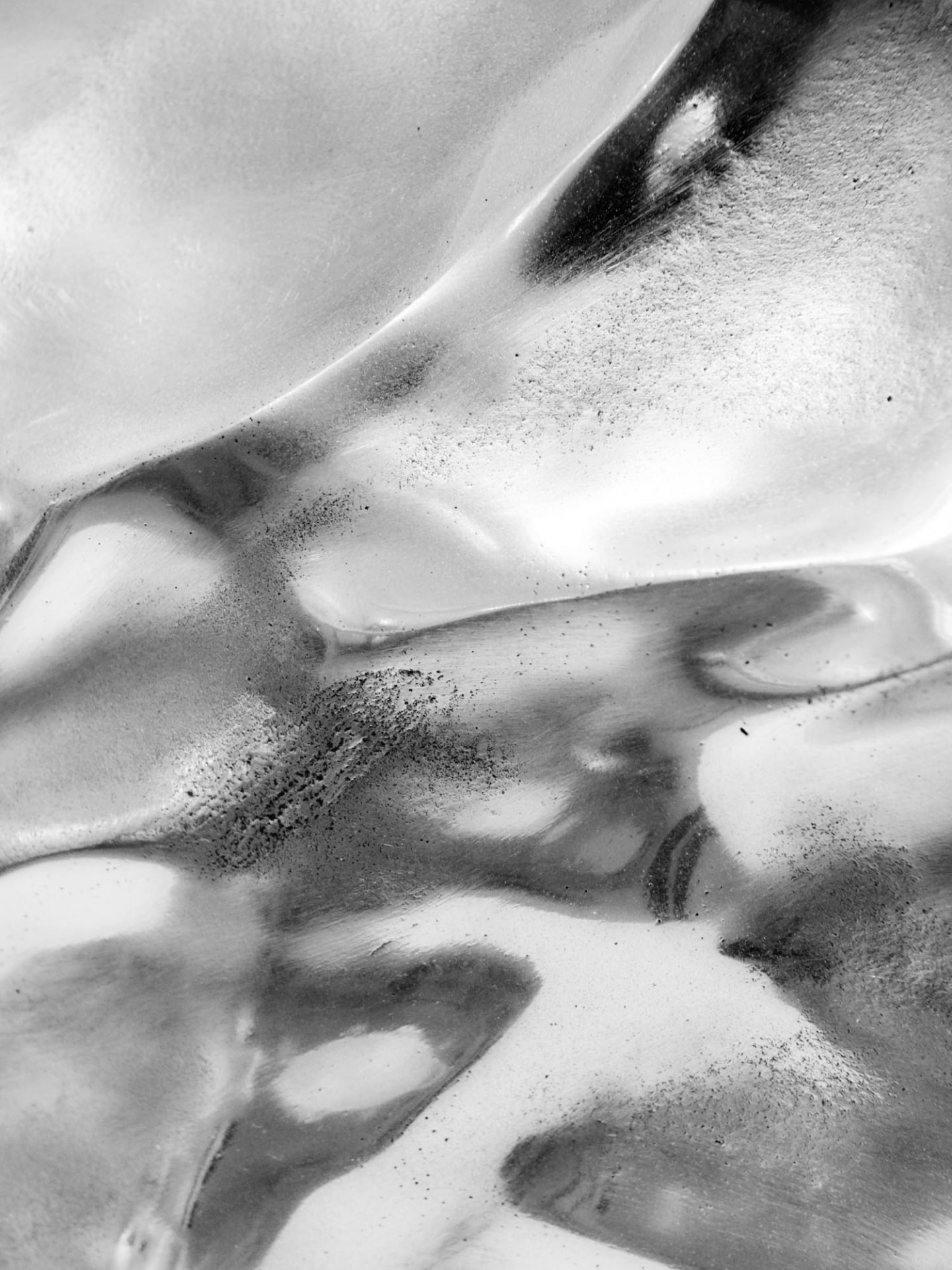
Technological innovation is deeply embedded in your practice — for example, in your “Smart” series. How do you believe technology is changing the nature of design as a discipline today?
For centuries our objects have been inert, lifeless. The bed was only a bed, the watch was only a watch, and the architecture was only a box. Today our objects become alive, reactive. Through technology, they acquire memory, intelligence and sensitivity. A few years ago, I developed household items that could feel our real needs better than us. One perceived the lack of oxygen and produced it immediately using microalgae, another analyzed our needs for daylight and palliated if necessary. I have also developed a bed that can enter you more quickly and deeply into sleep! It offers you more than comfort and the effect of light and temperature, it puts your body and mind in the best possible conditions for the night… If technology gives a new dimension to our objects, I always use it by making it disappear. I want a good night, but I do not want to sleep with a computer!
Your recent exhibition, “Ocean Memories” at the Carpenter’s Workshop Gallery in New York, featured digitally designed blocks of marble or brass that resemble waves. You’ve said that your favourite materials to work with are, air, light, water and sound. Can you speak to the process of translating the elements into a solid object?
We have all had the experience of sitting in front of the ocean. Alone or two. We have all already felt this state in which it is not necessary to speak, or even to think. To face the ocean is to face a perpetual movement whose strength and magnitude are totally beyond us. At the origin of the project “Ocean Memories,” there was this desire to reproduce this experience but far from the sea, this desire to work the liquid but without water… Using specialized 3D software in liquid effect, my team and I reproduced in an absolutely realistic way the complex geometry of moving water. It was a very long digital and then physical process because the objective was to freeze the movements of the water in the stone. Indeed, from the 3D software, we made numerically carved blocks of marble. The machines work several weeks to make a piece and then begins a long polishing job to make the marble as reflective as the ocean.
Images slideshow © Mathieu Lehanneur
One of your most recent projects saw you design the concept for the new flagship Maison Kitsuné store in New York City, with its iconic vine-like clothing rail, which you’ve described as a “magic pencil.” What was the inspiration behind the concept?
I wanted to literally and figuratively take the customer to the back of the shop. From the street to the fitting rooms. I have spread throughout the space a long metal tube with iridescent reflections circulating from floor to ceiling. As needed, it becomes a garment for clothes, shelves or lighting fixtures.
The tubes are made of steel but the coating gives them a colorful, almost childlike appearance, like a magic candy on the scale of architecture. The idea of this project is to bring a spirit both Parisian and Japanese… in New York! The space is designed as a series of rooms, like a classic Parisian apartment. This Haussmannian imprint is crossed by the steel liana, like an artificial and magical vegetation, as in the Japanese cartoons that rocked my youth…
Images slideshow © Mathieu Lehanneur
Your clients include Nike, Verve Cliquot, Issey Miyake and Sony, as well as several revered cultural and artistic institutions worldwide. What are your criteria for choosing who to work with or which projects to take on?
The two most important criteria are freedom and friendship. Any project is a lot of work and energy. It’s also a lot of time… Every project is a part of my life! So I do not want to do it under duress or in pain. I need to feel at the first meeting that my client wants to work with me, that he trusts me and that he will give me the freedom to make the best possible project for his brand or his place… And since I do not want to spend parts of my life with people I do not like, I also choose my clients so that they are always people I enjoy seeing and seeing again throughout the project process. There are many projects, but there is only one life!
Where in Paris do you go to seek new and challenging perspectives?
Paris is a beautiful city to live and work but it is a city that must leave often to have fun rediscovering it. When I’m in Paris, I work, when I need inspiration, rest or novelty, I leave Paris!
Images studio visit © Thomas Chéné for iGNANT Production
